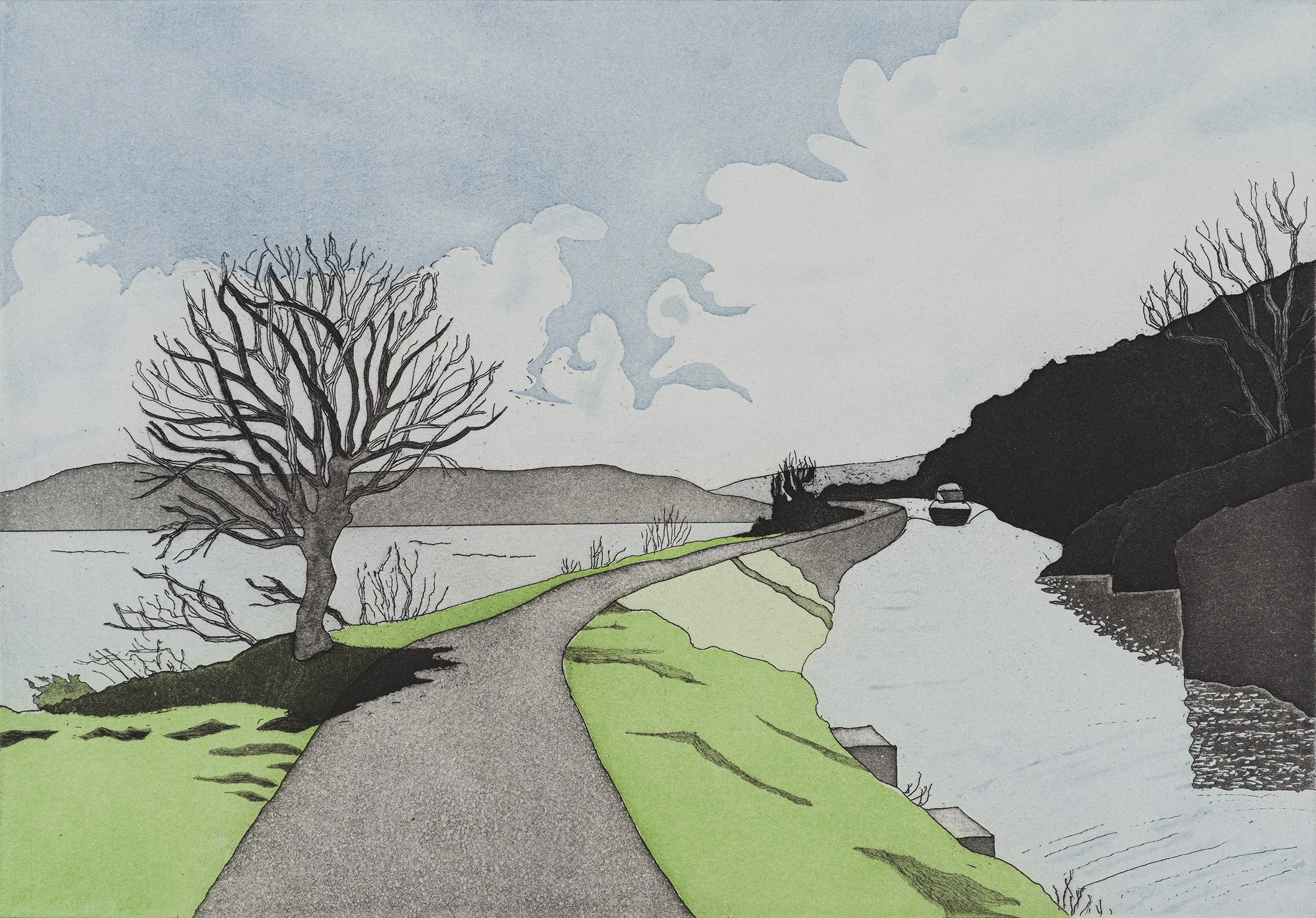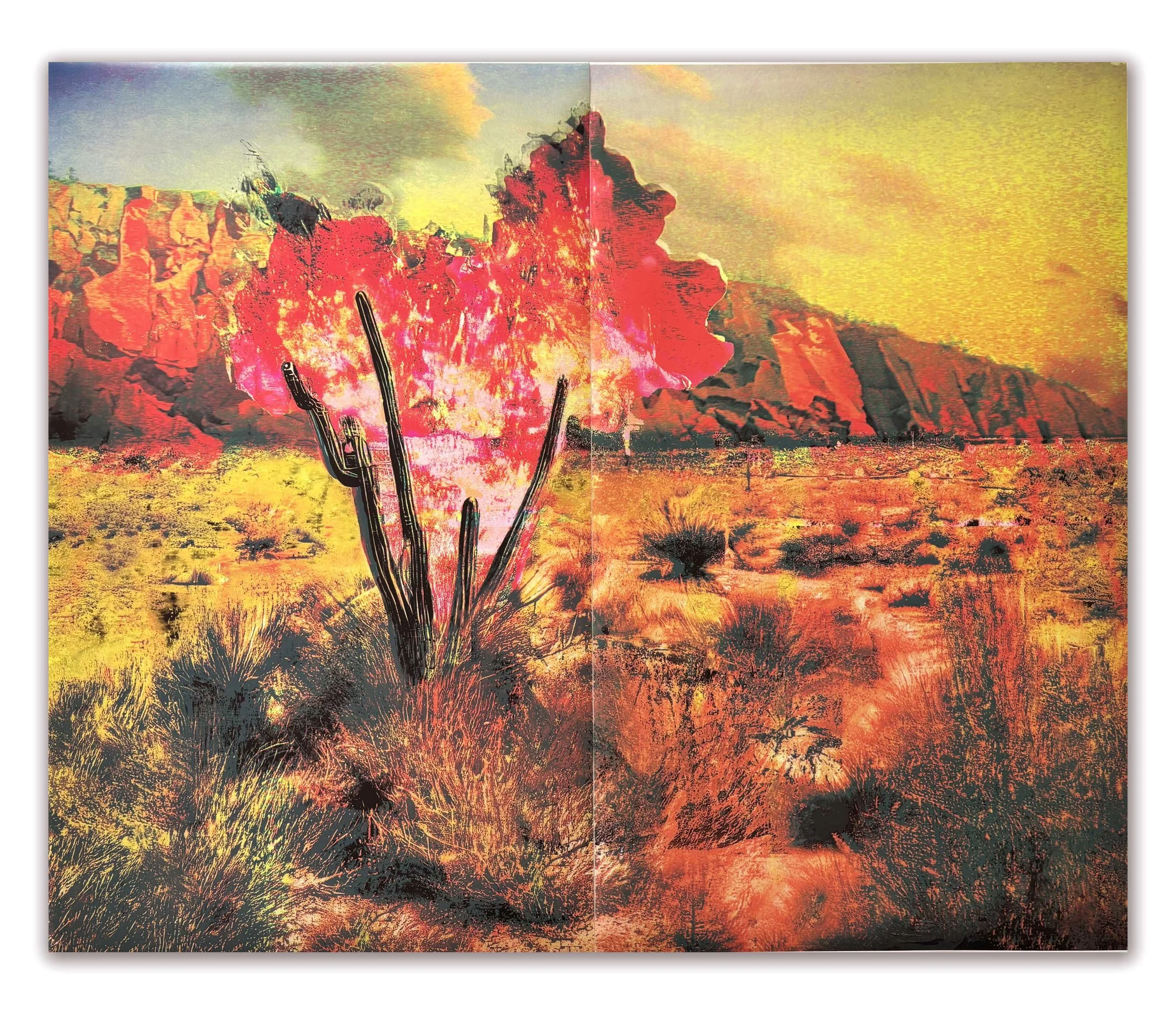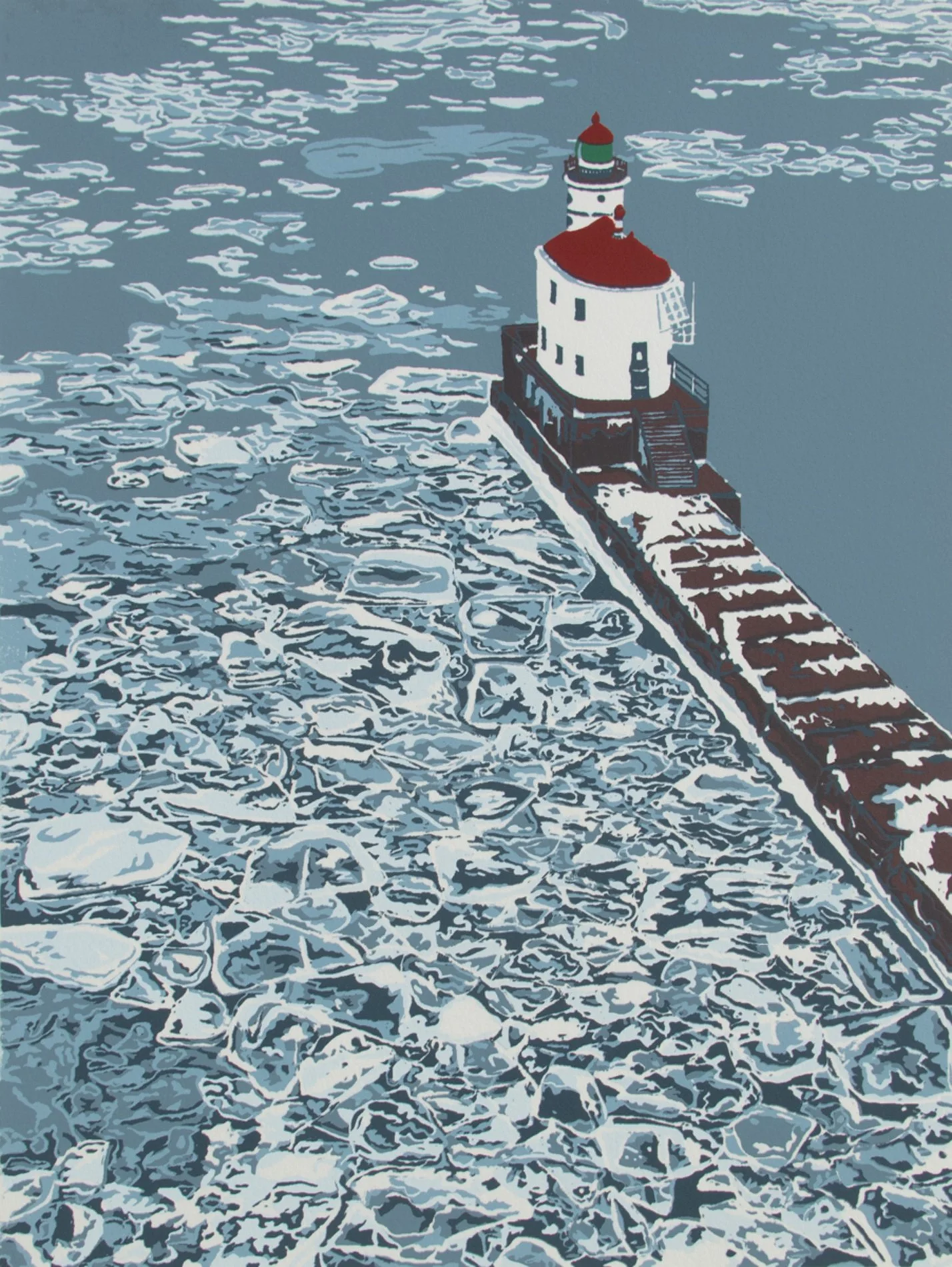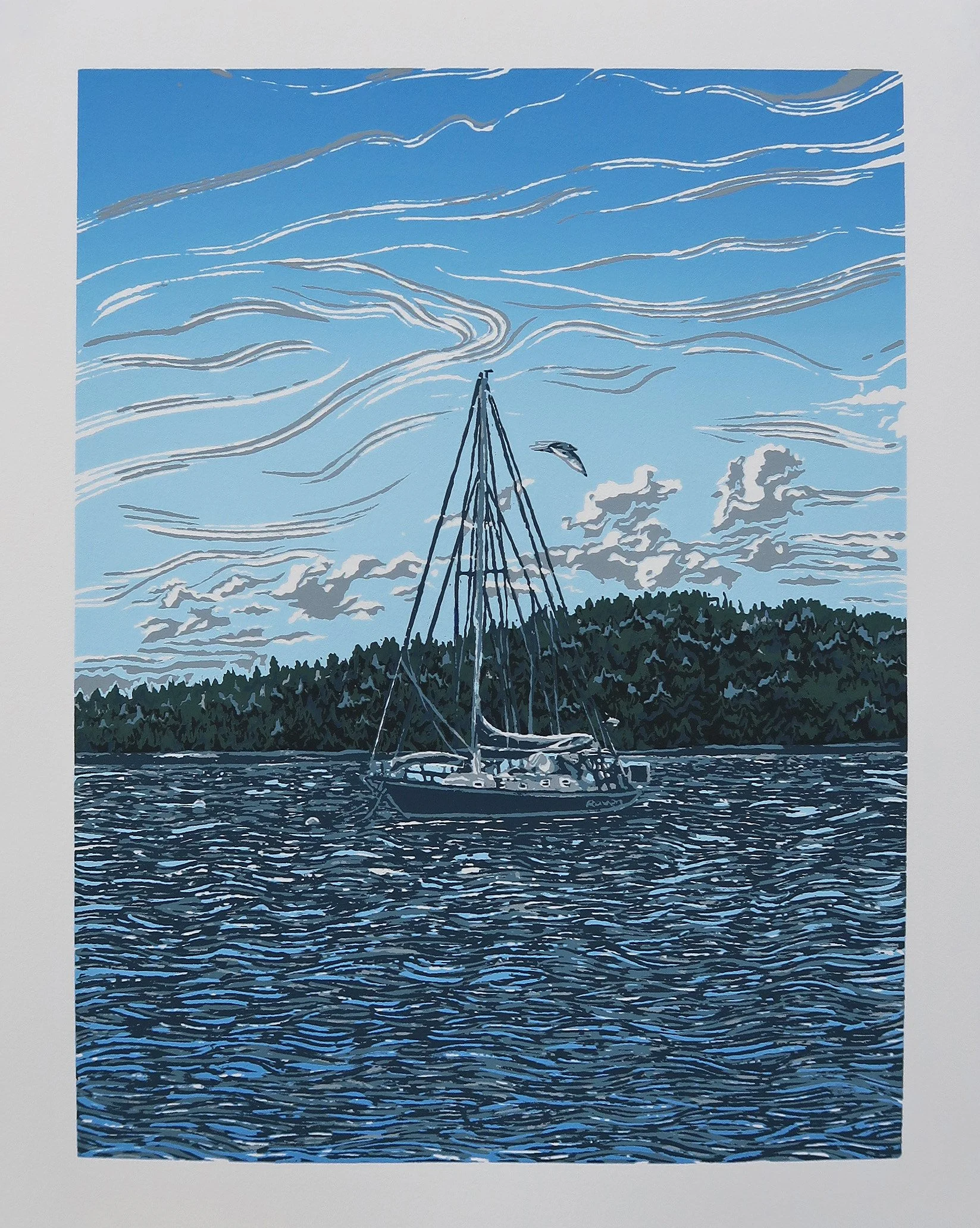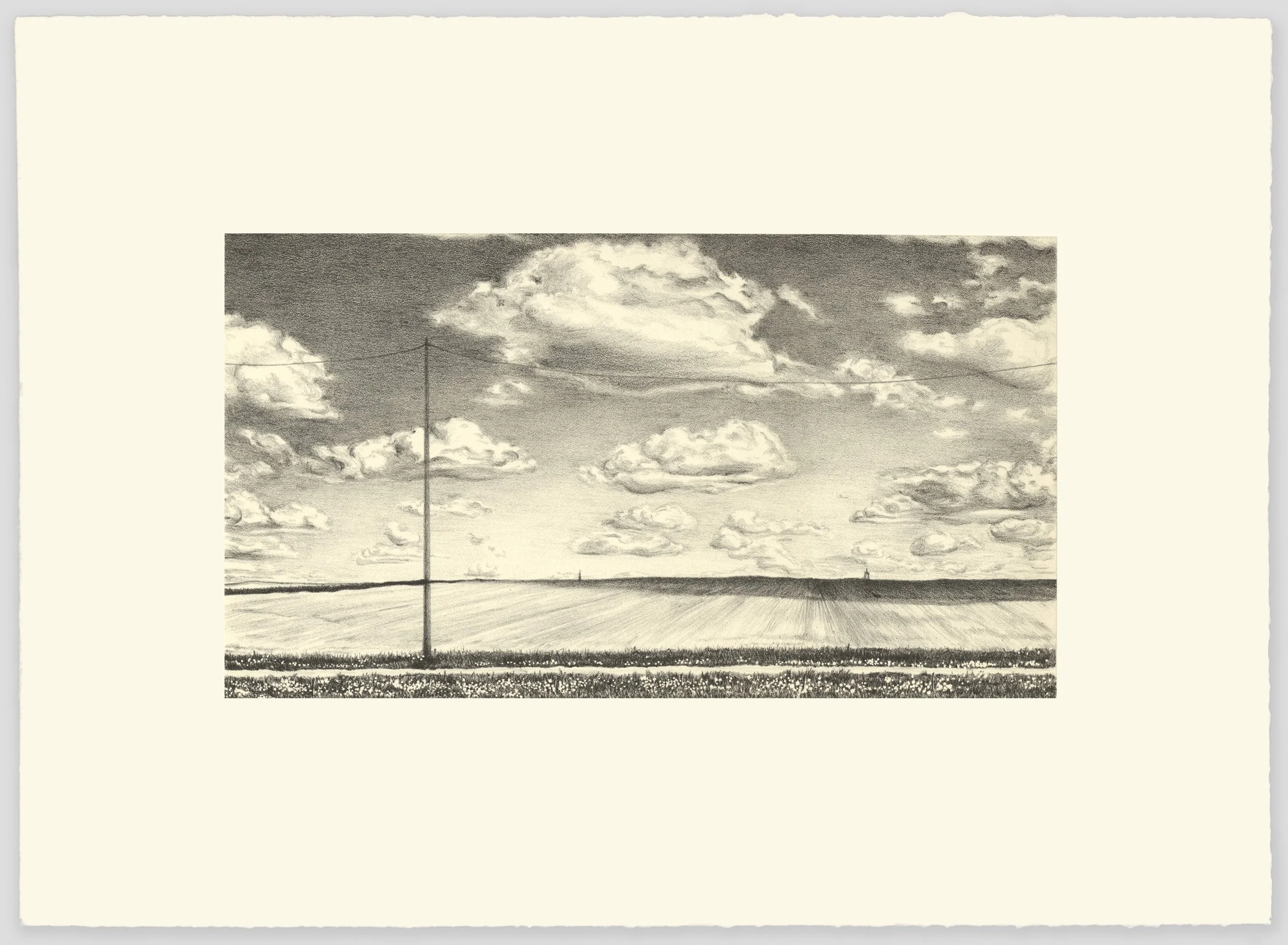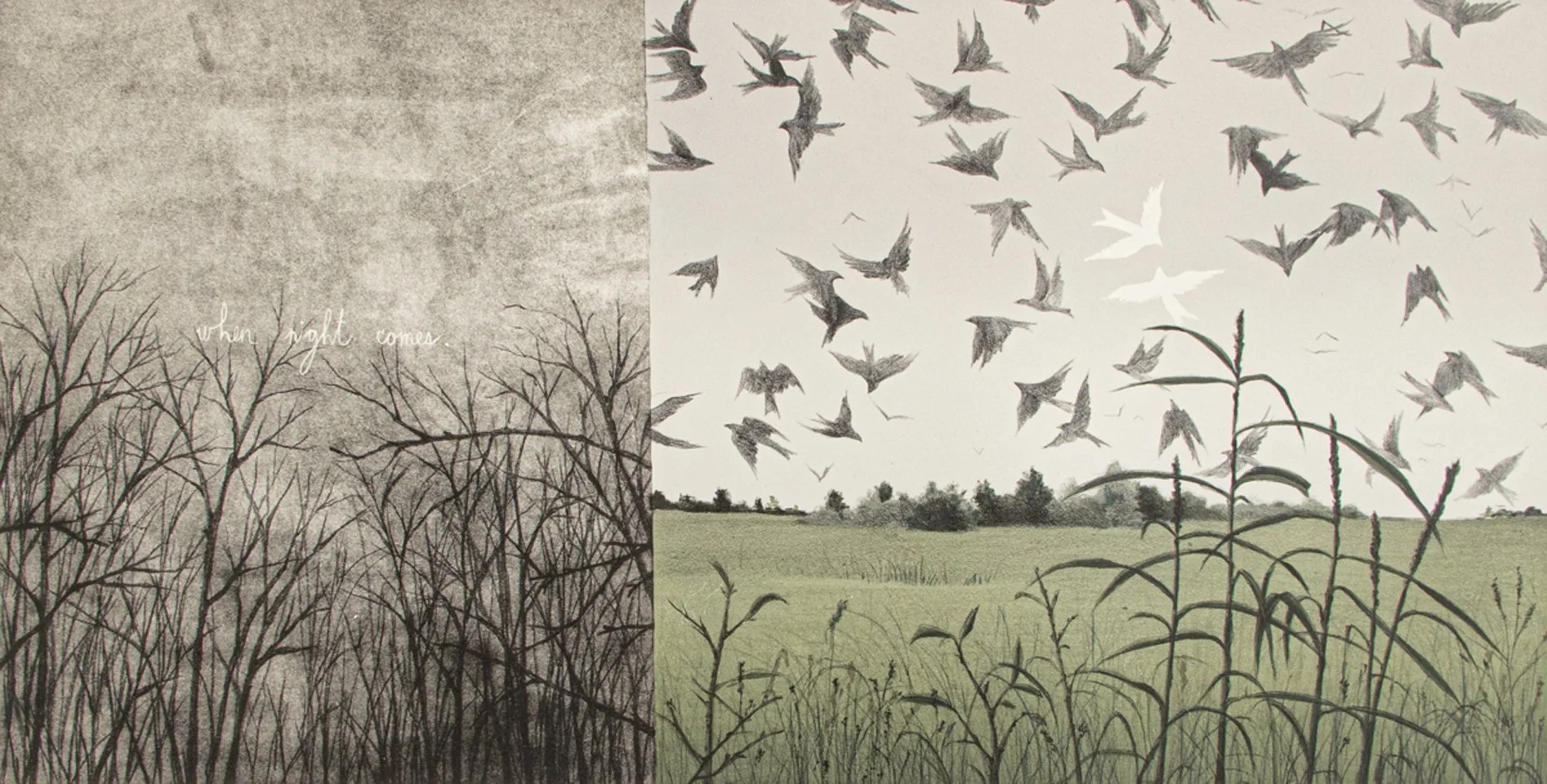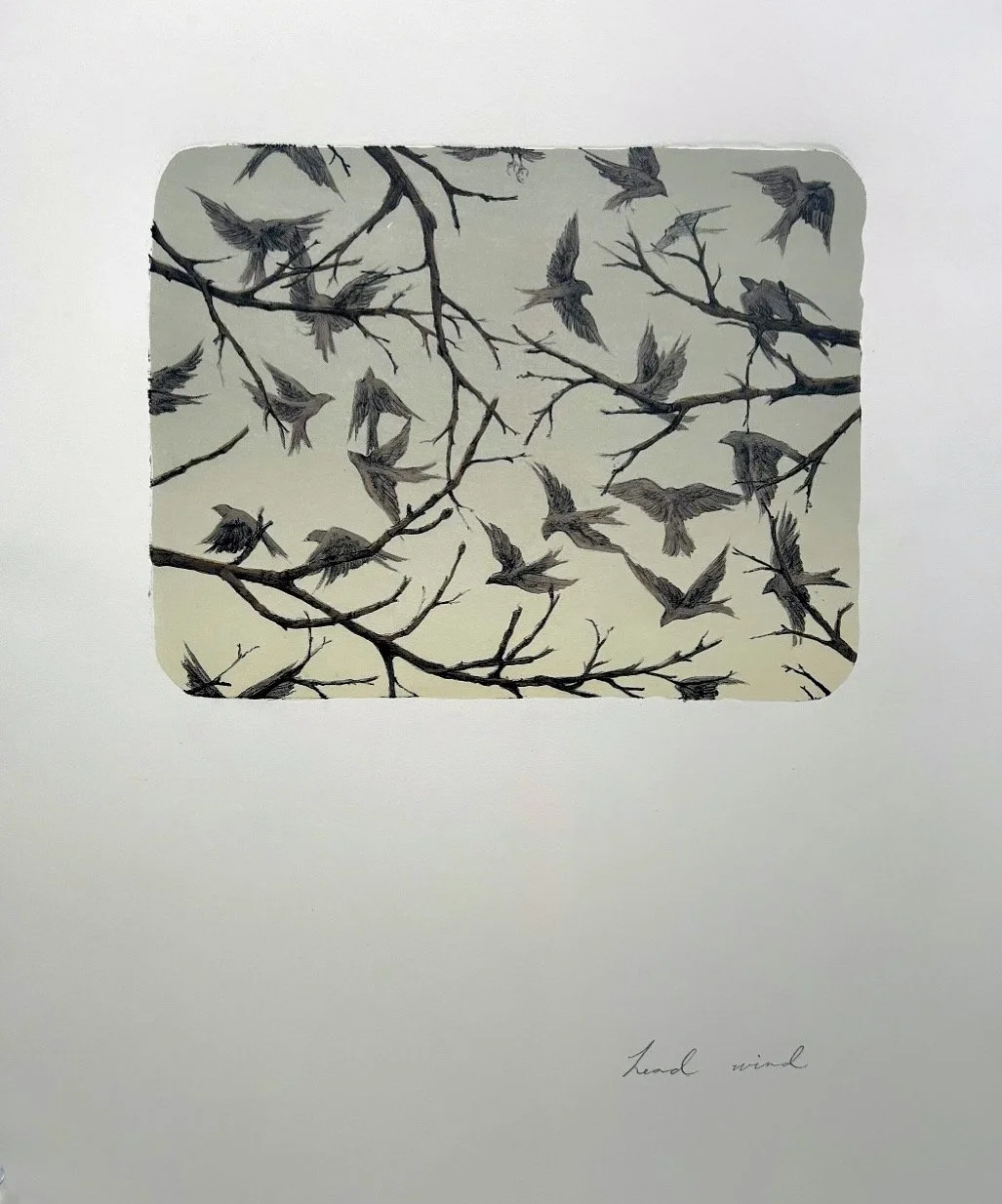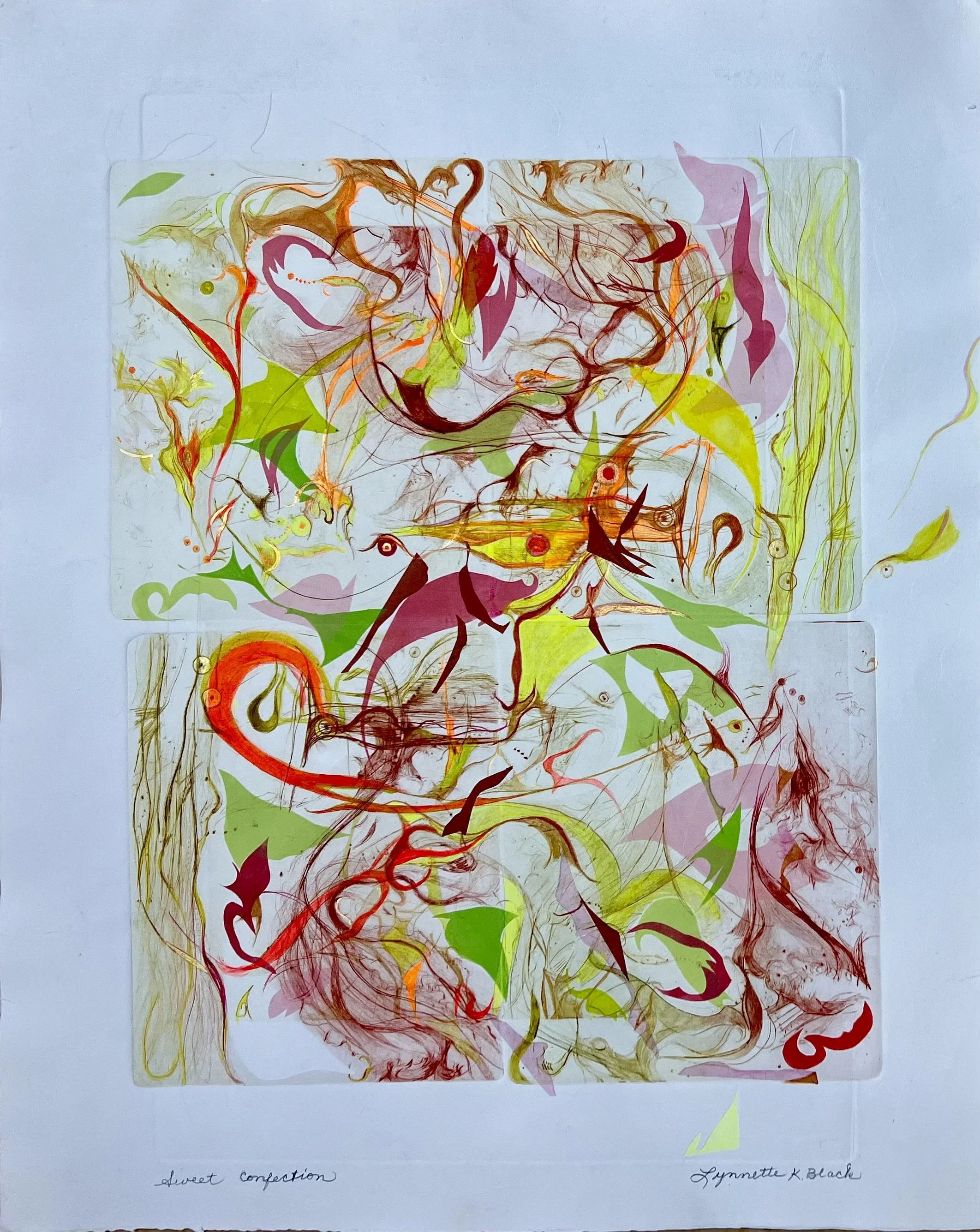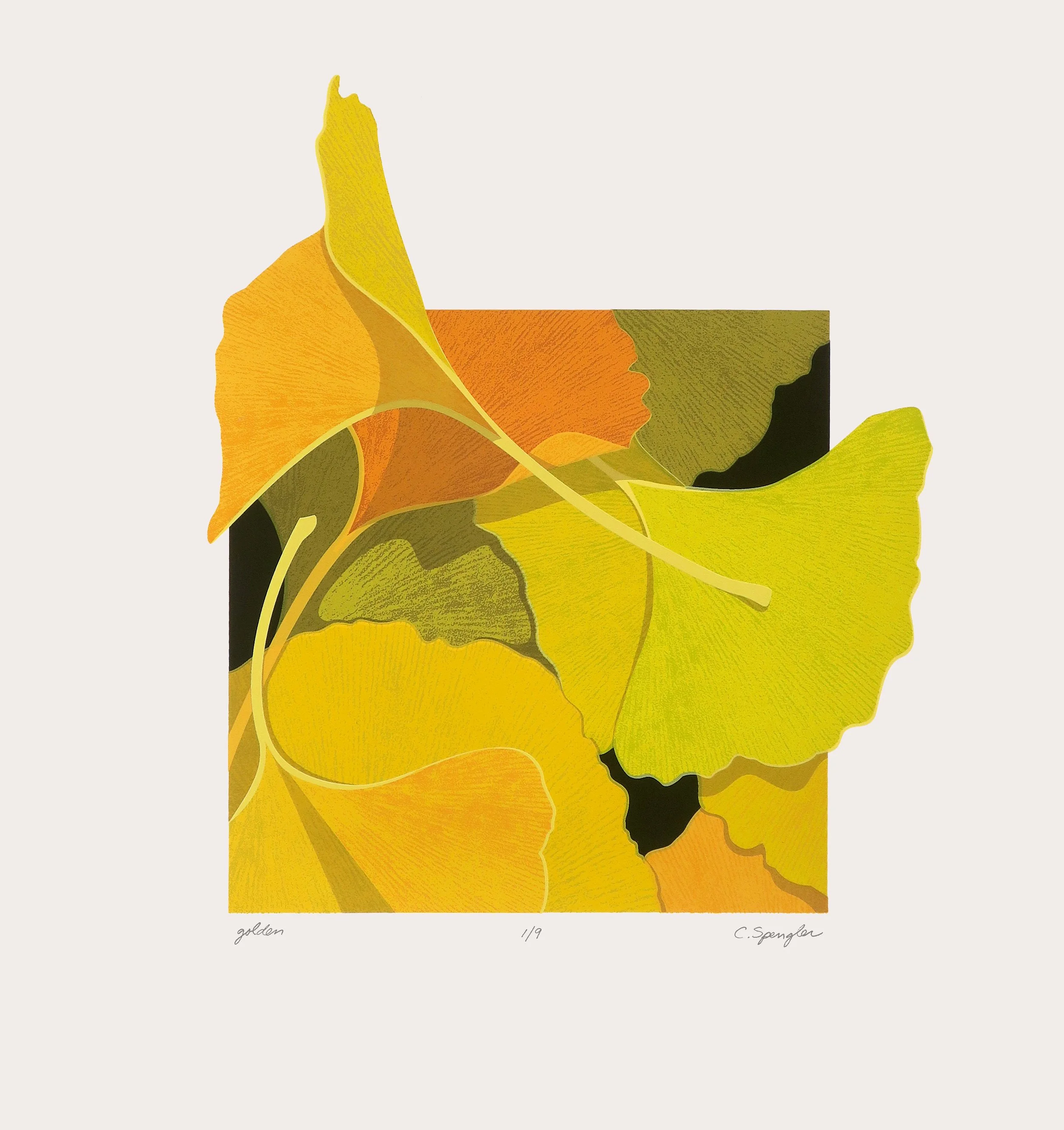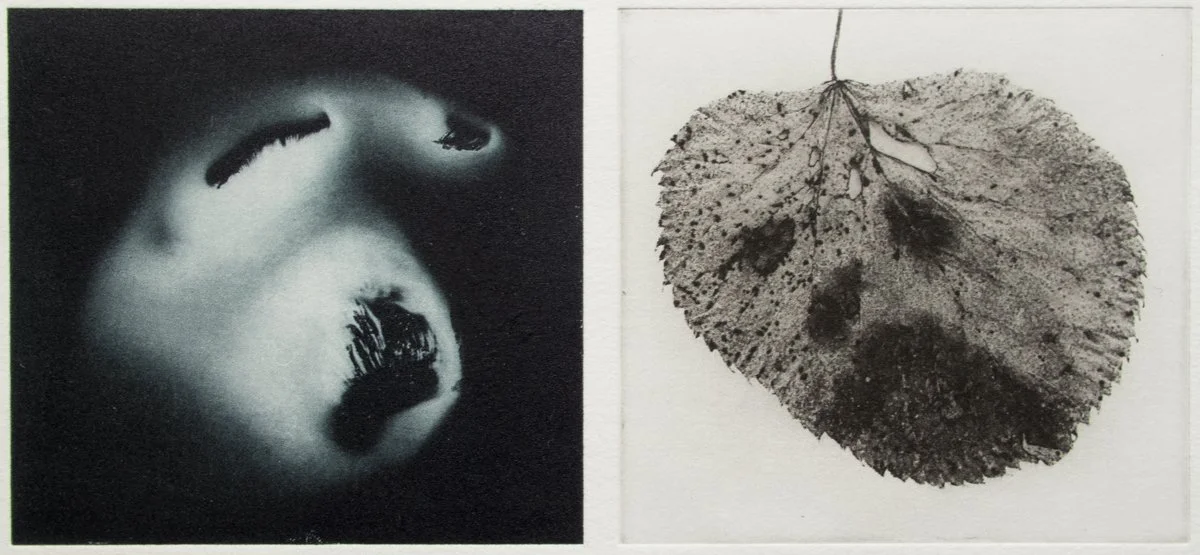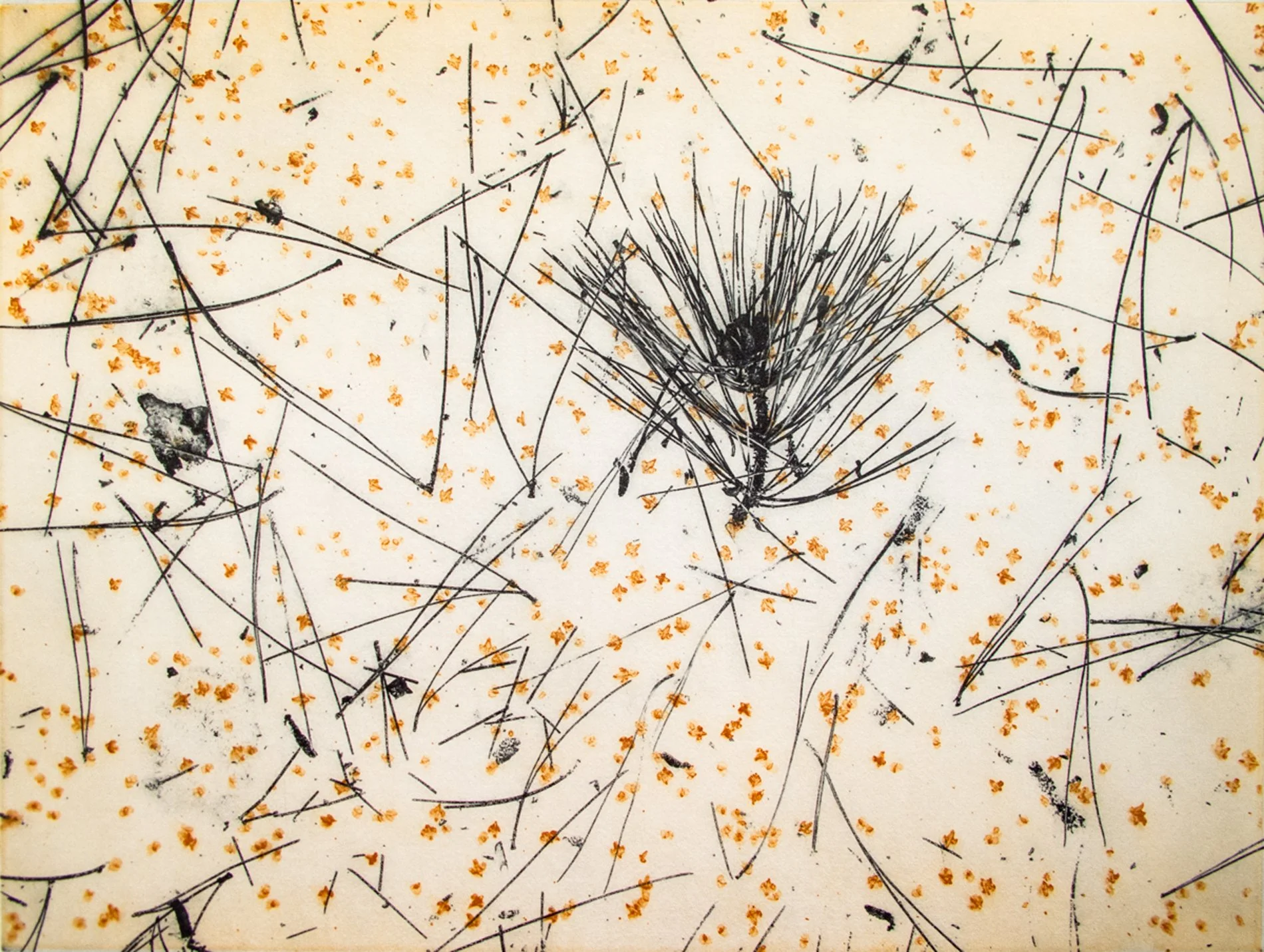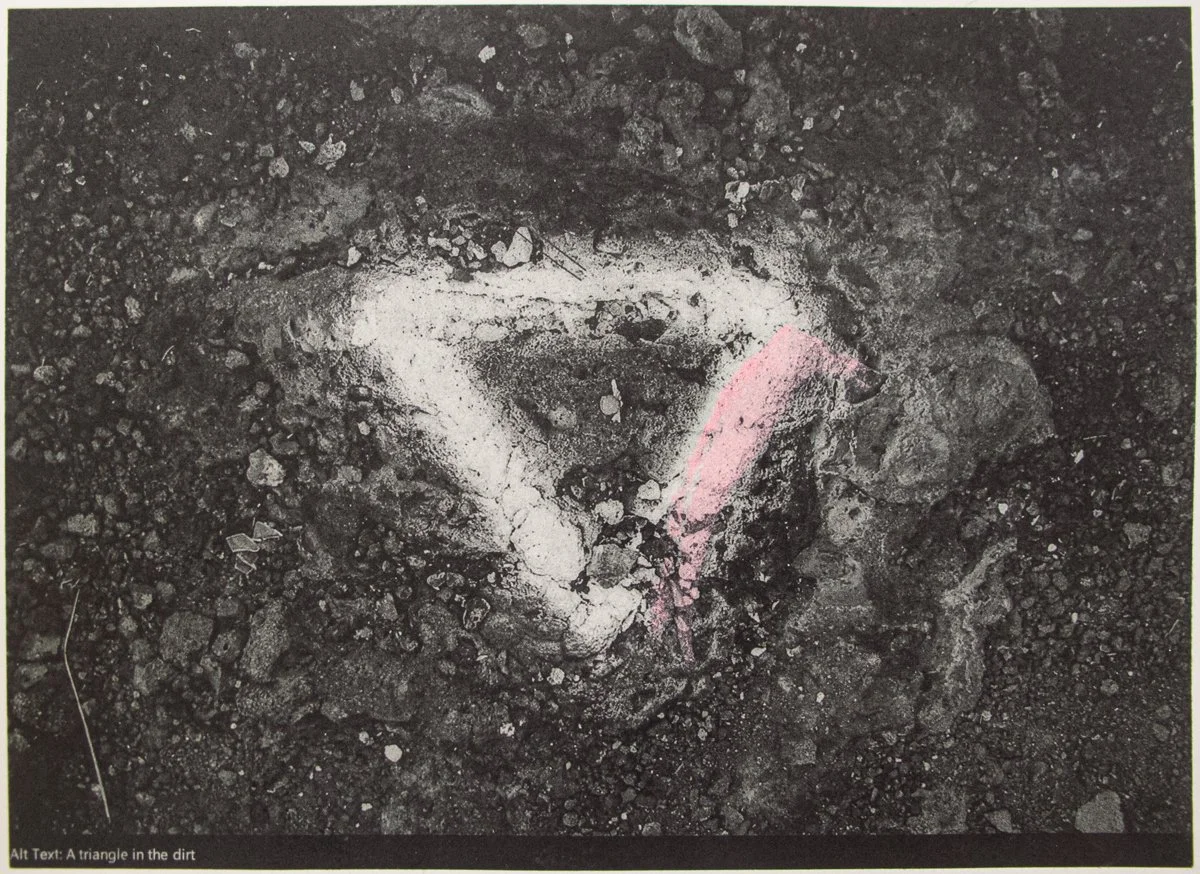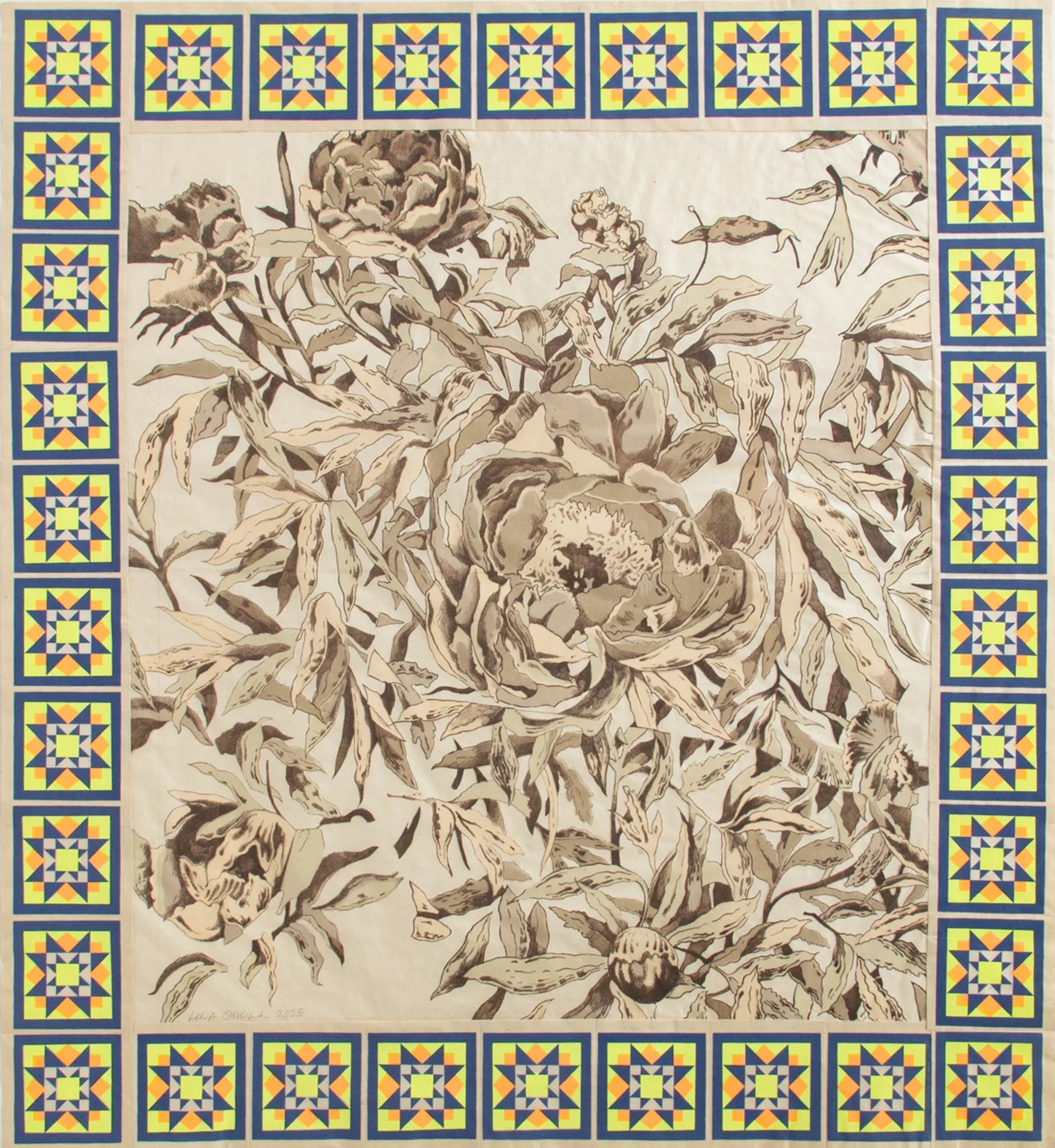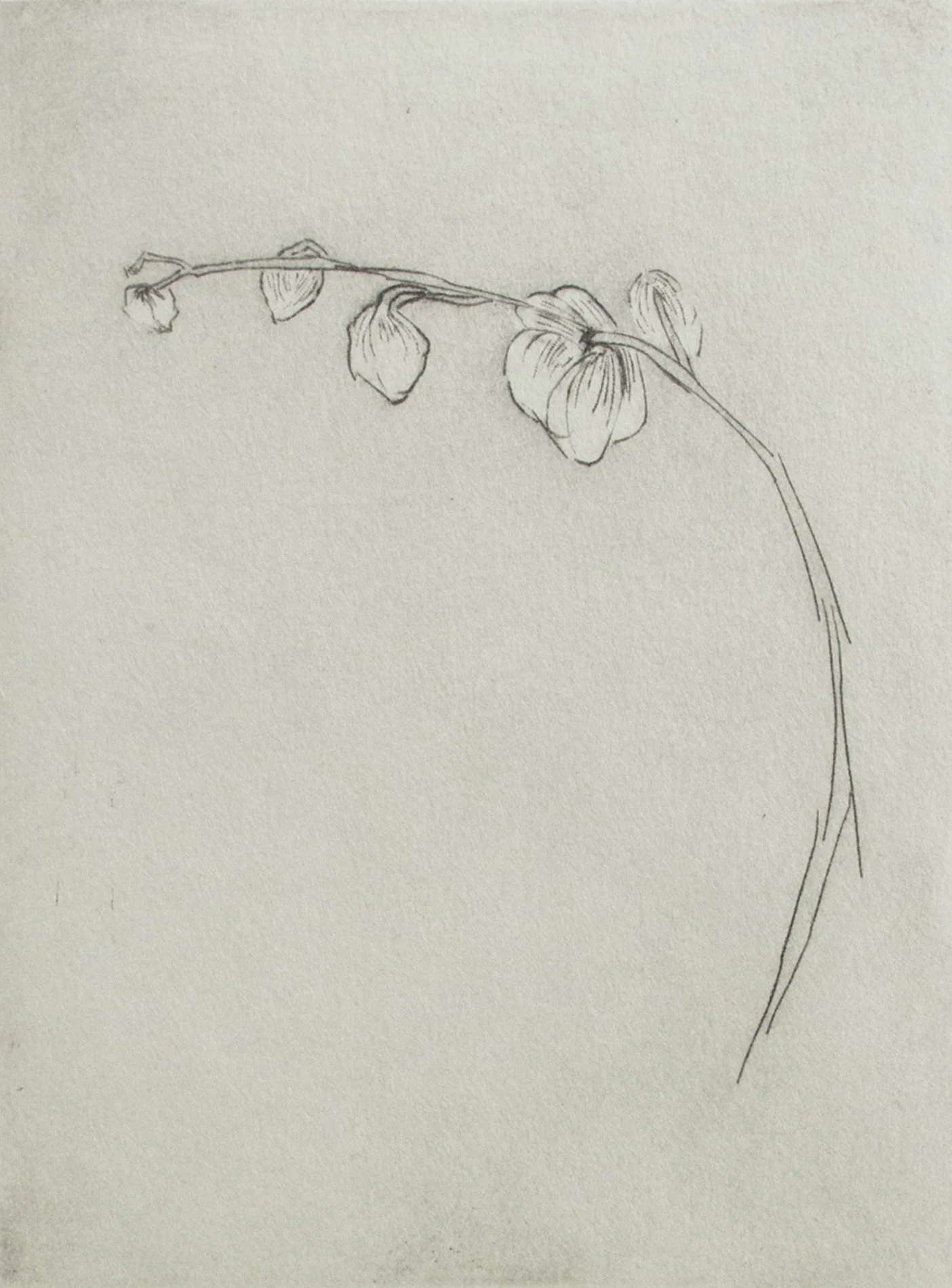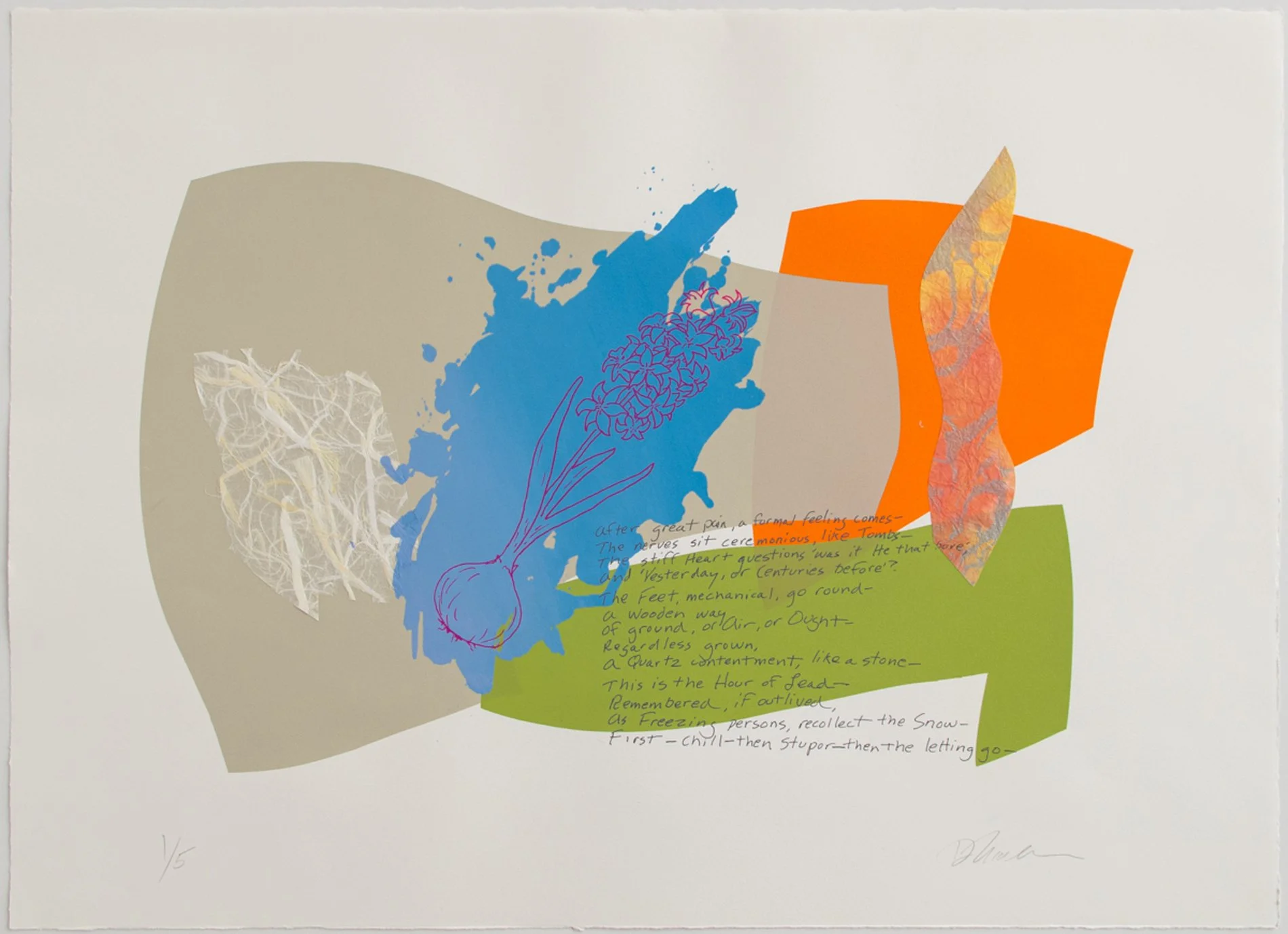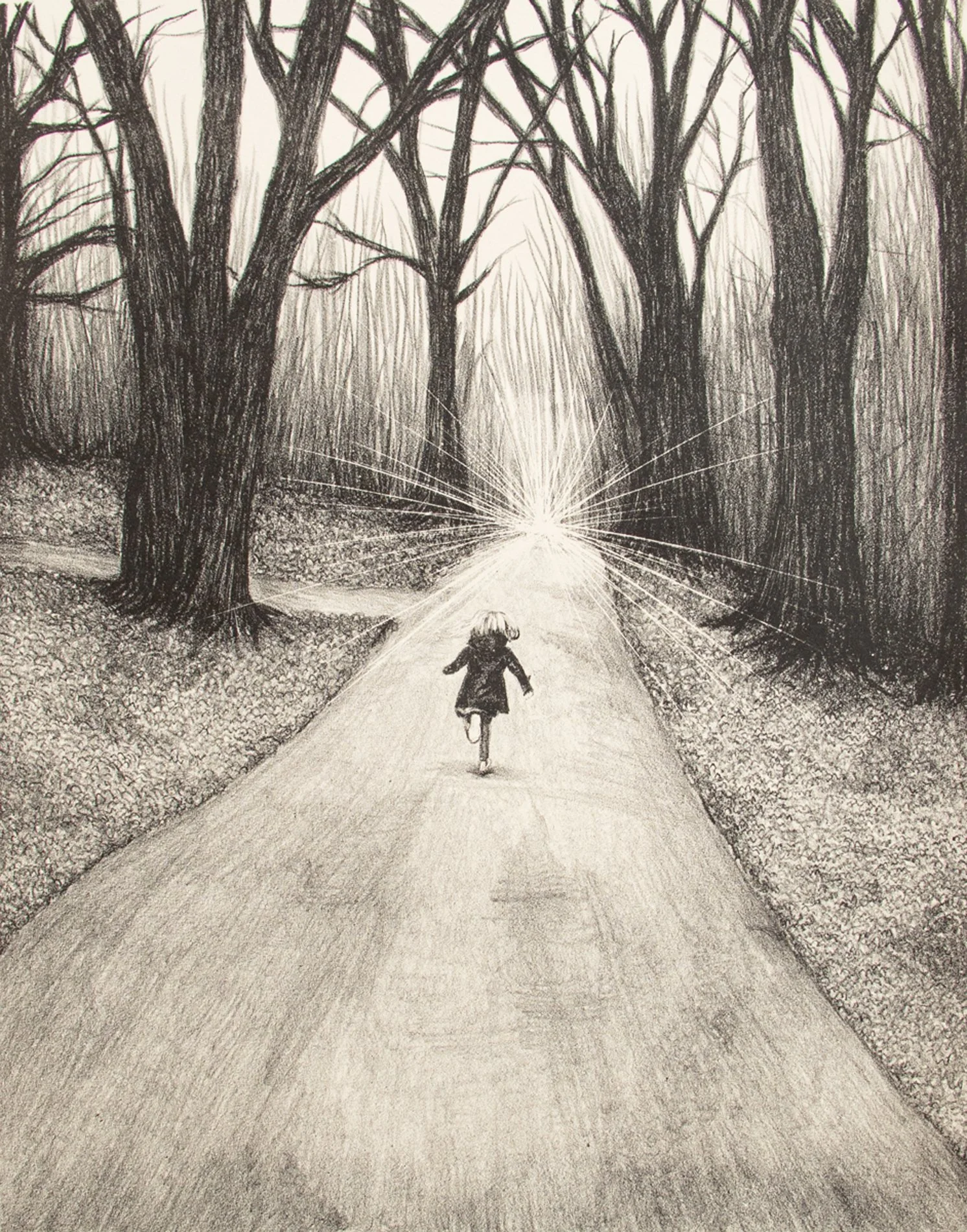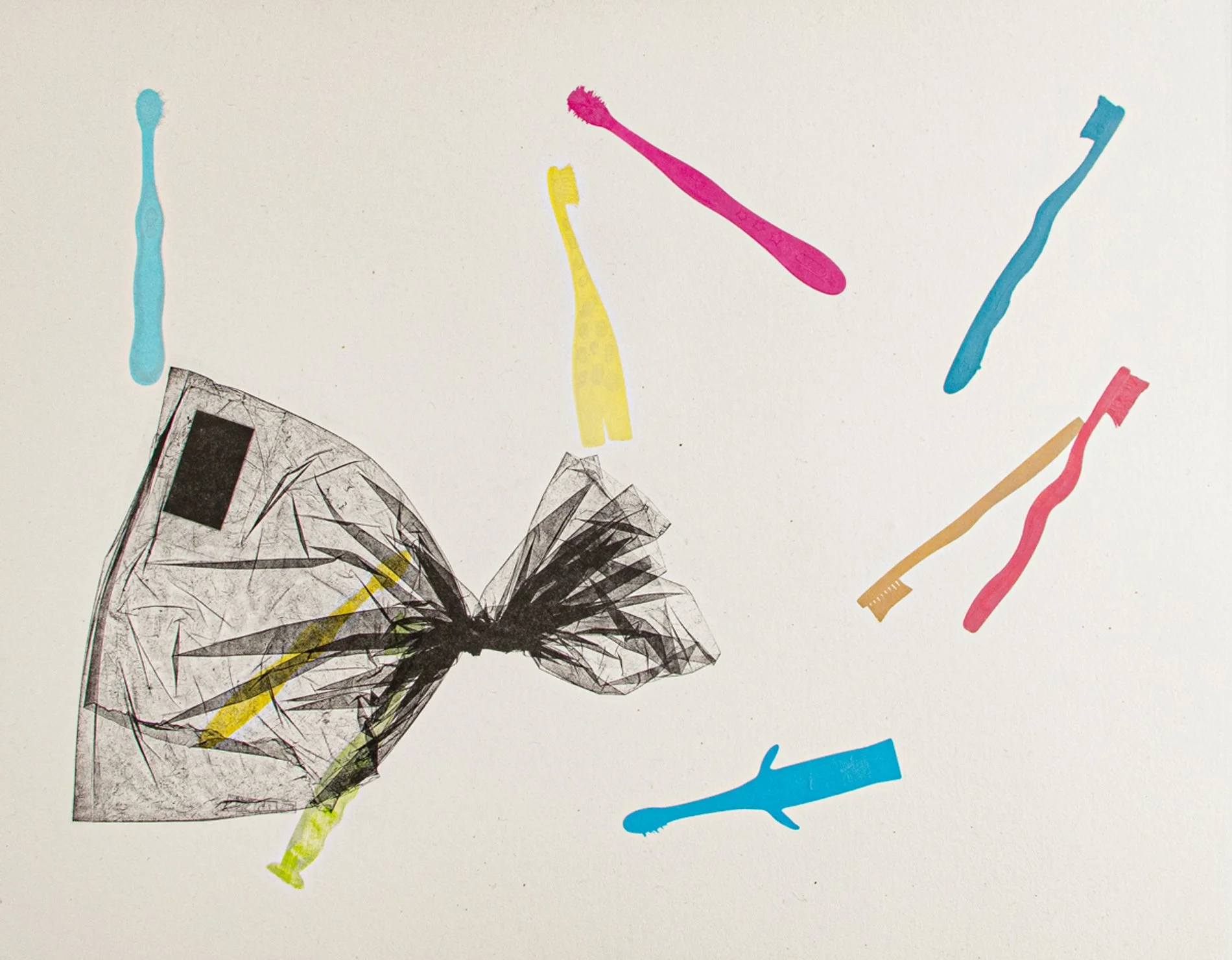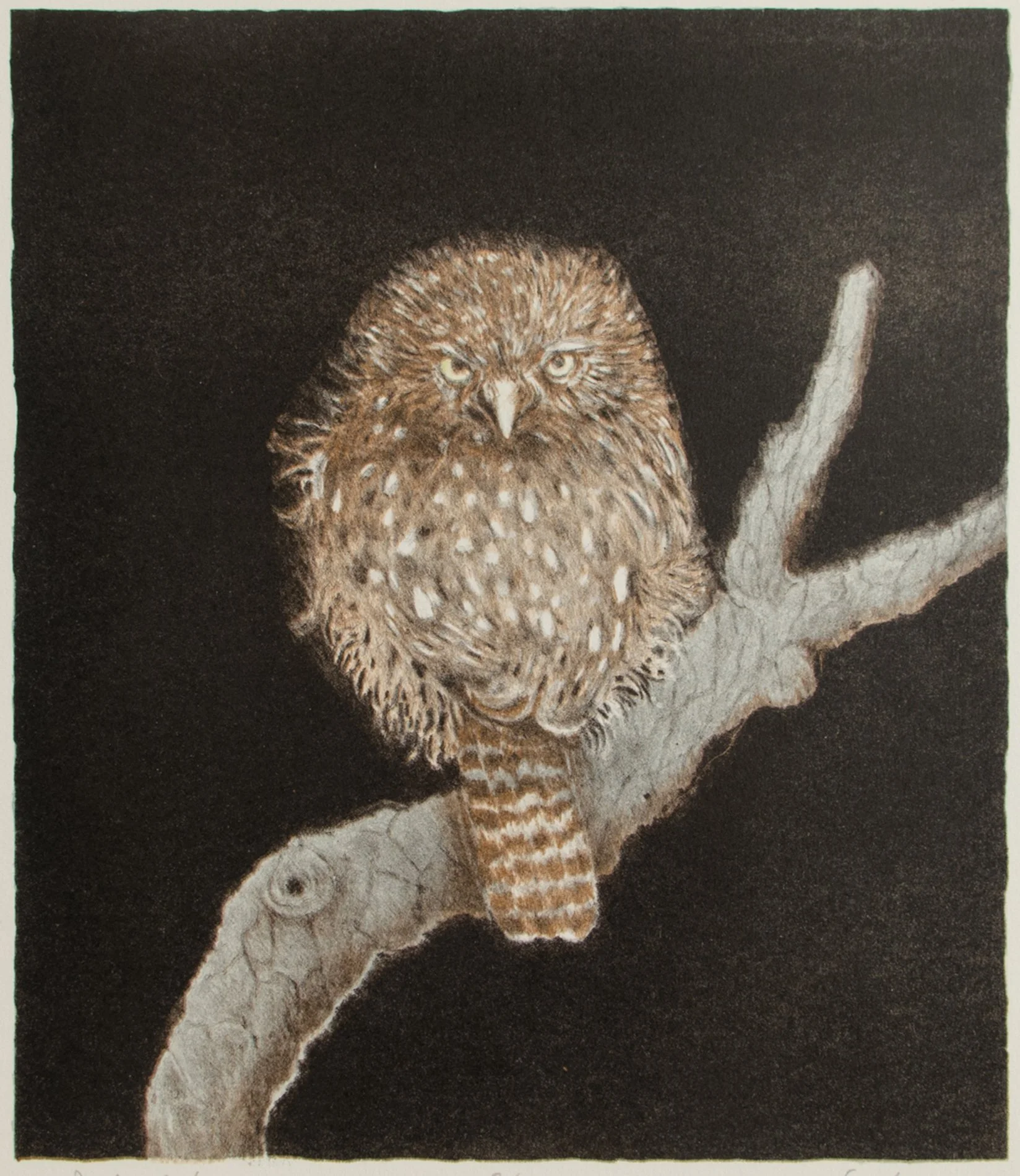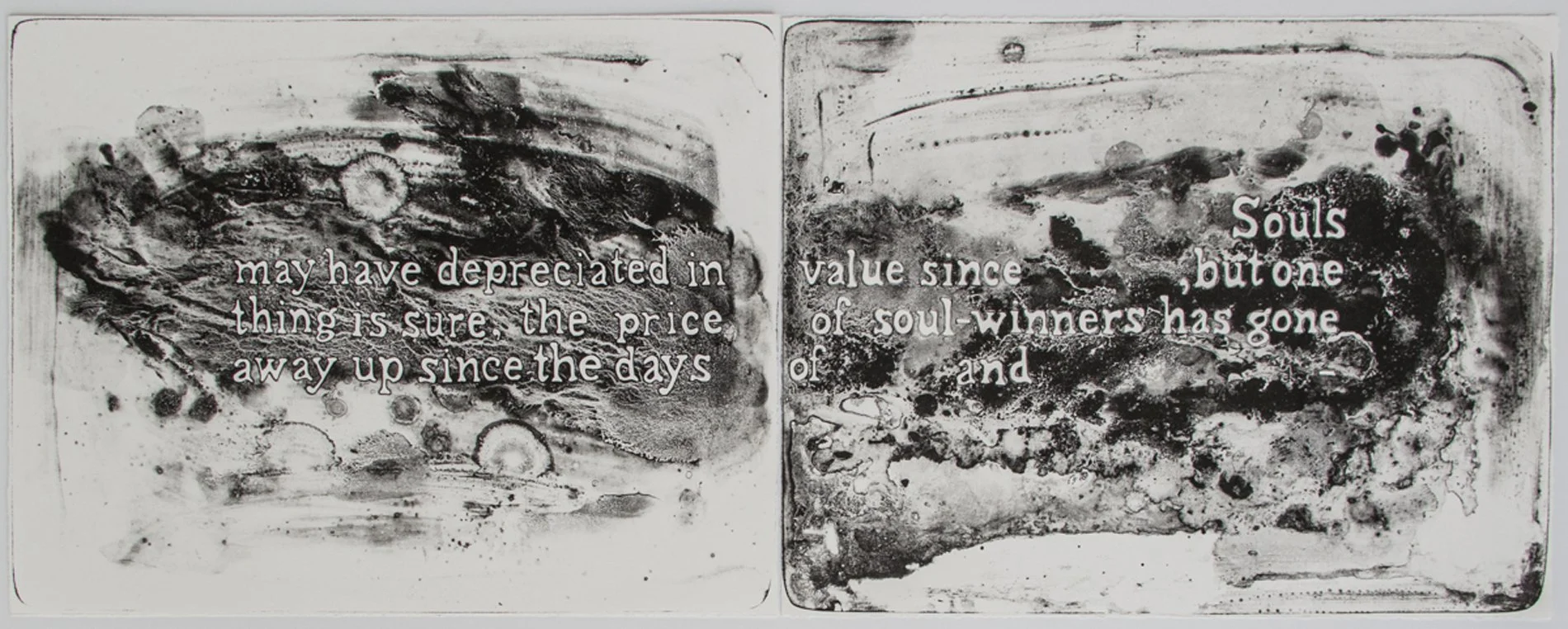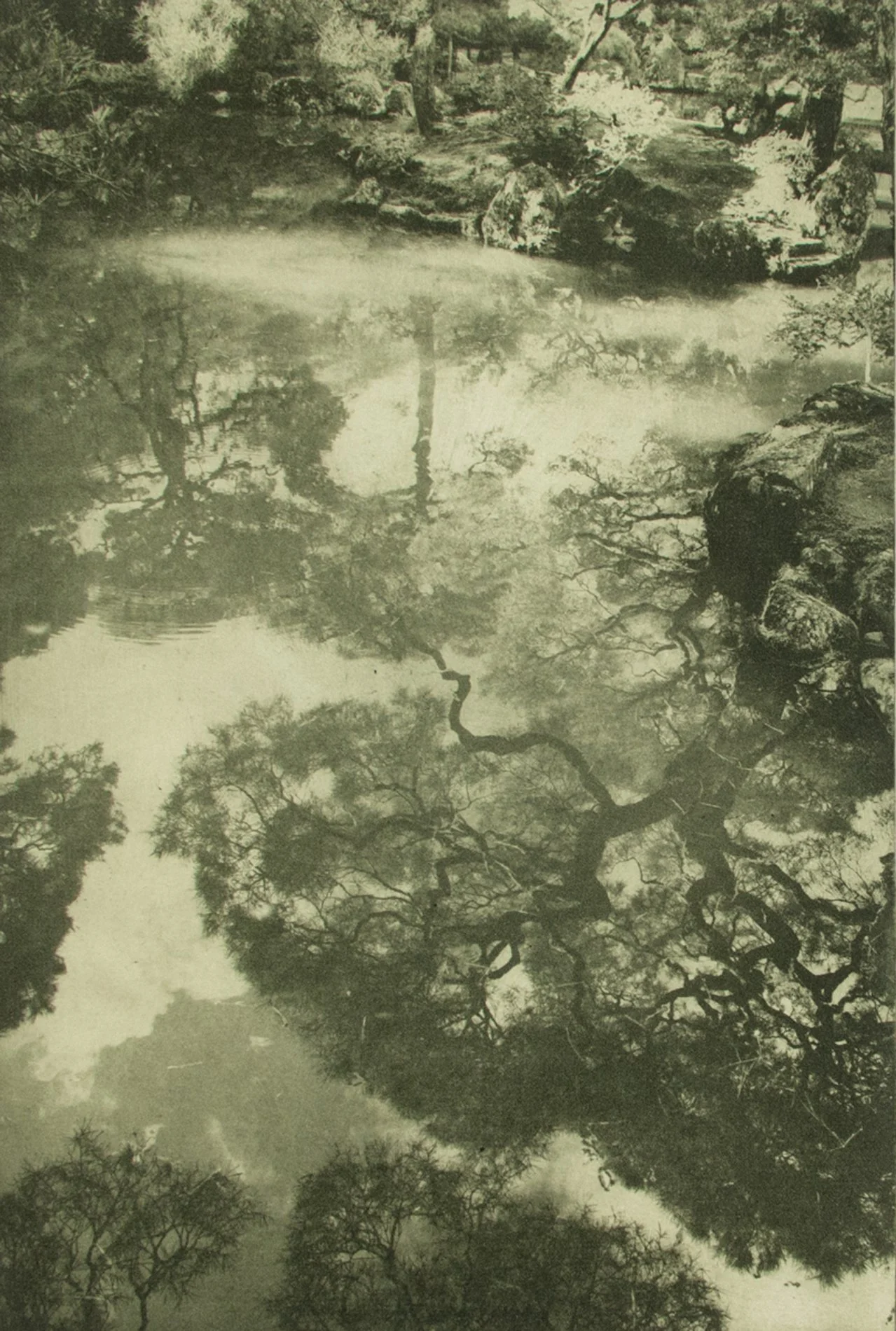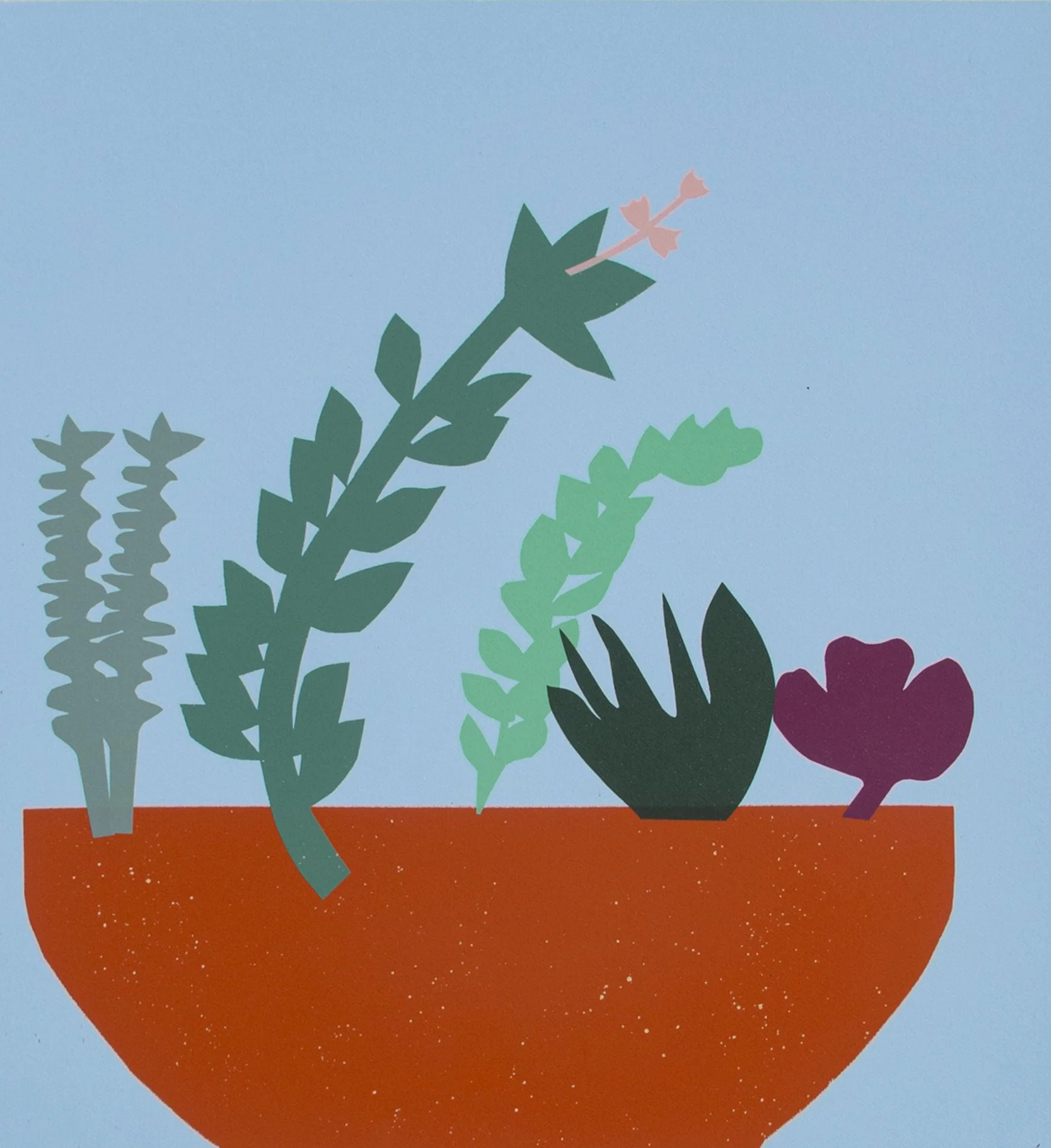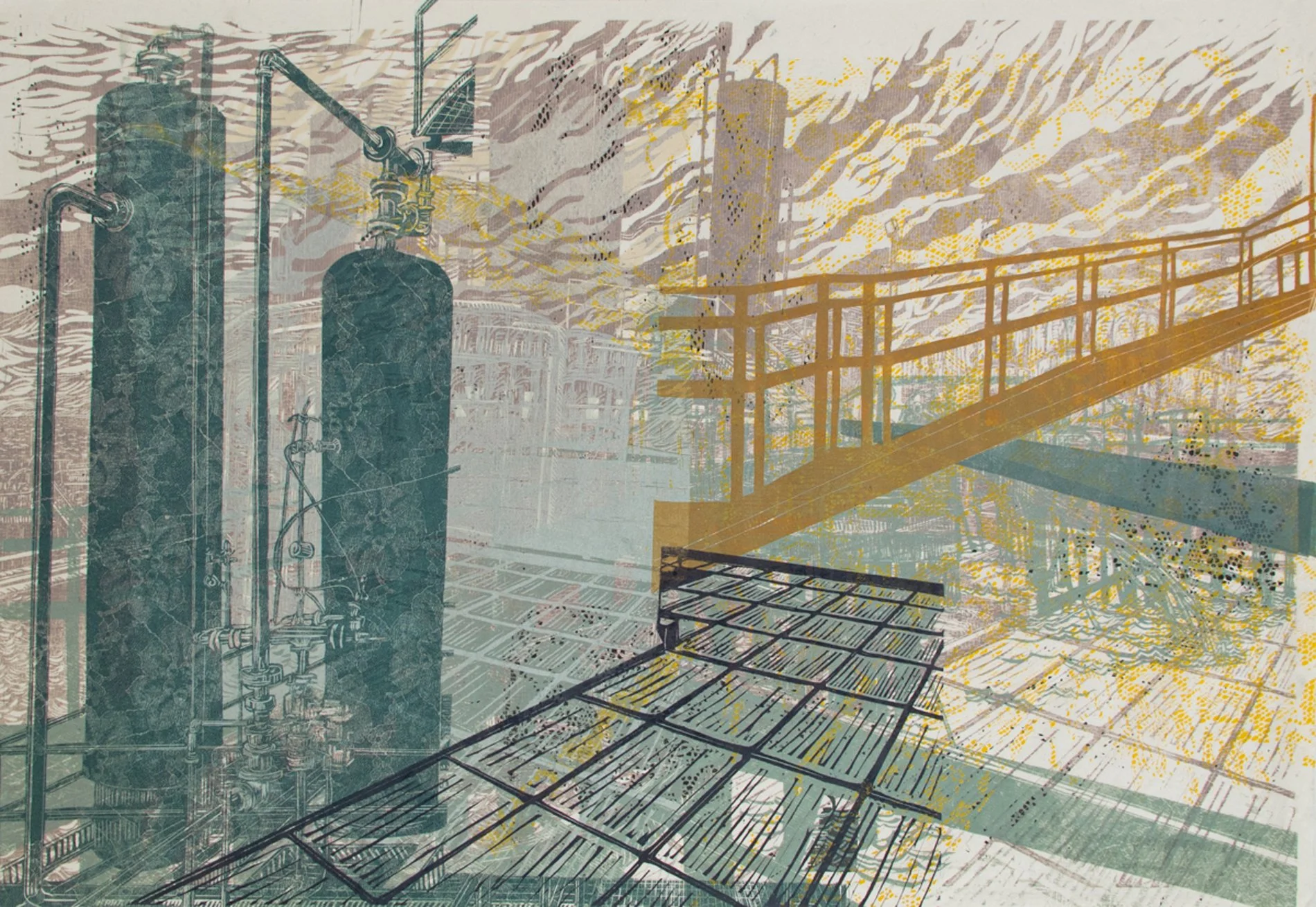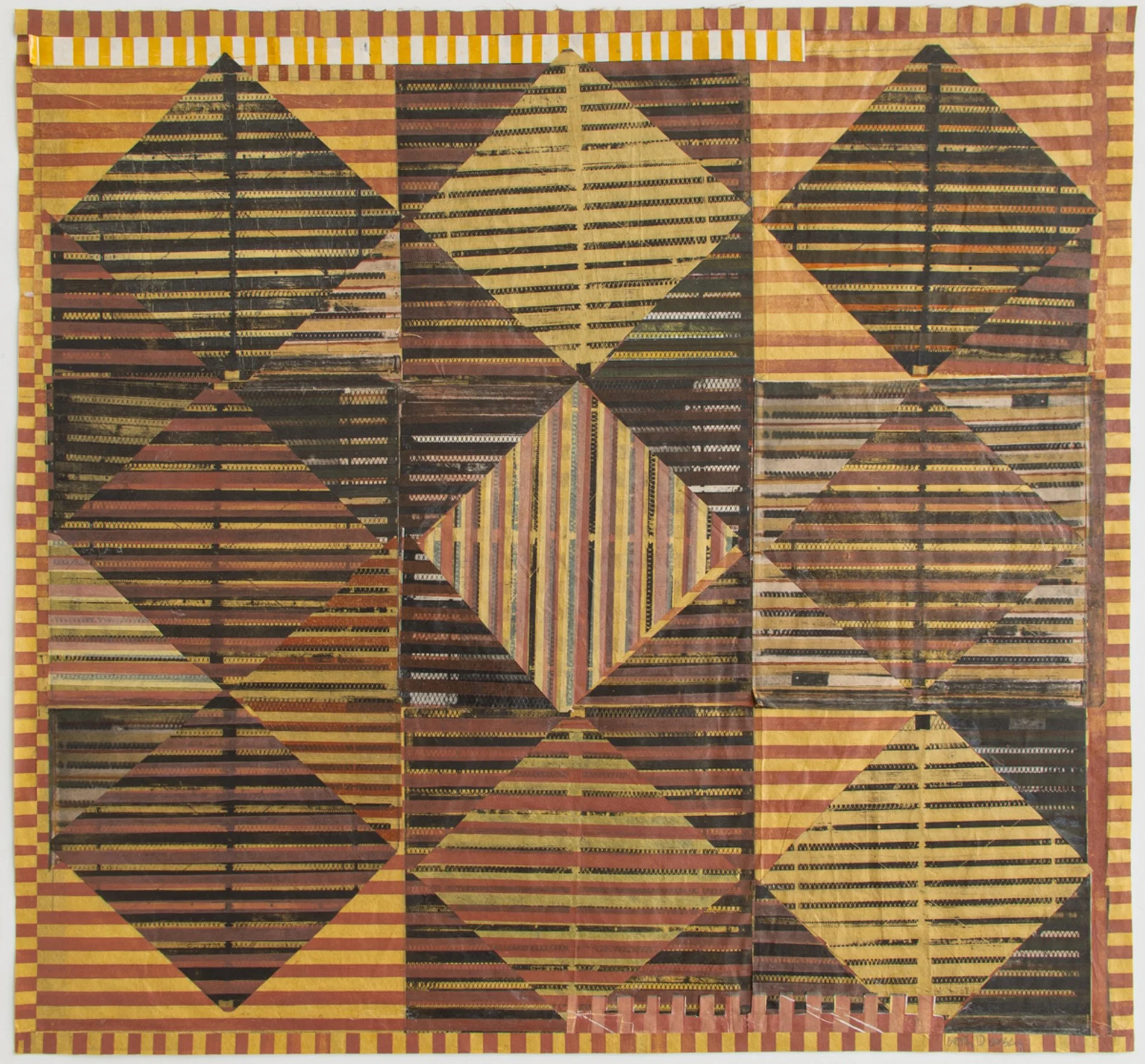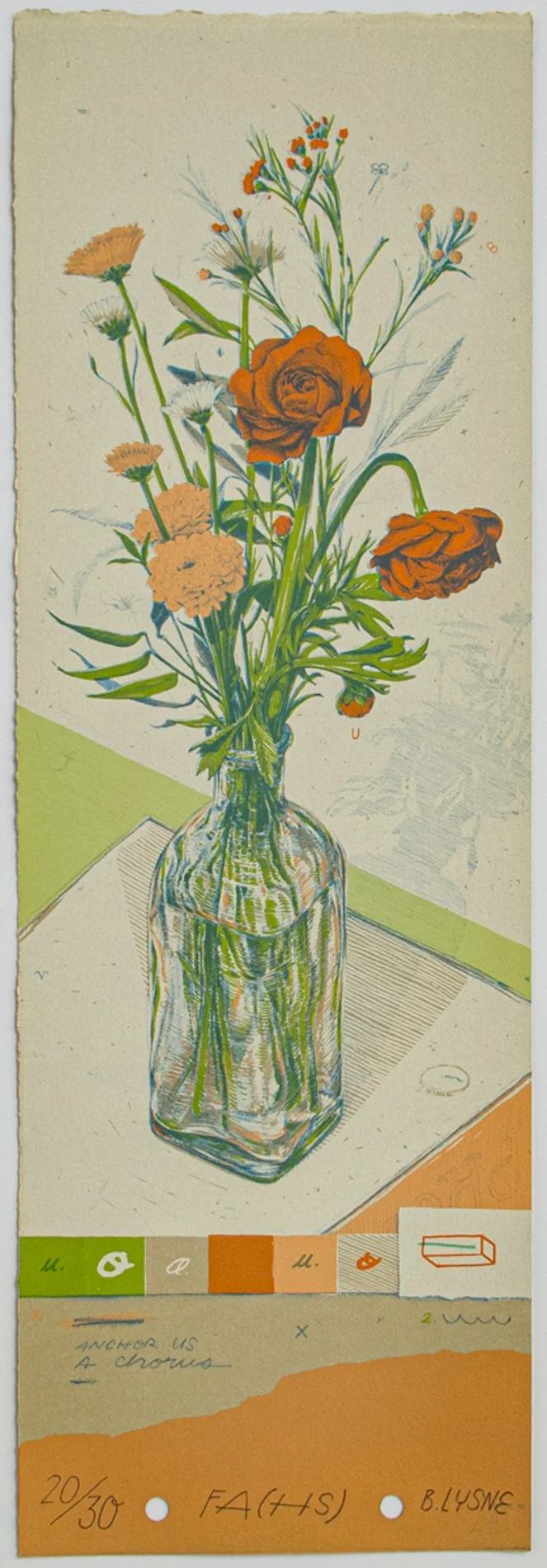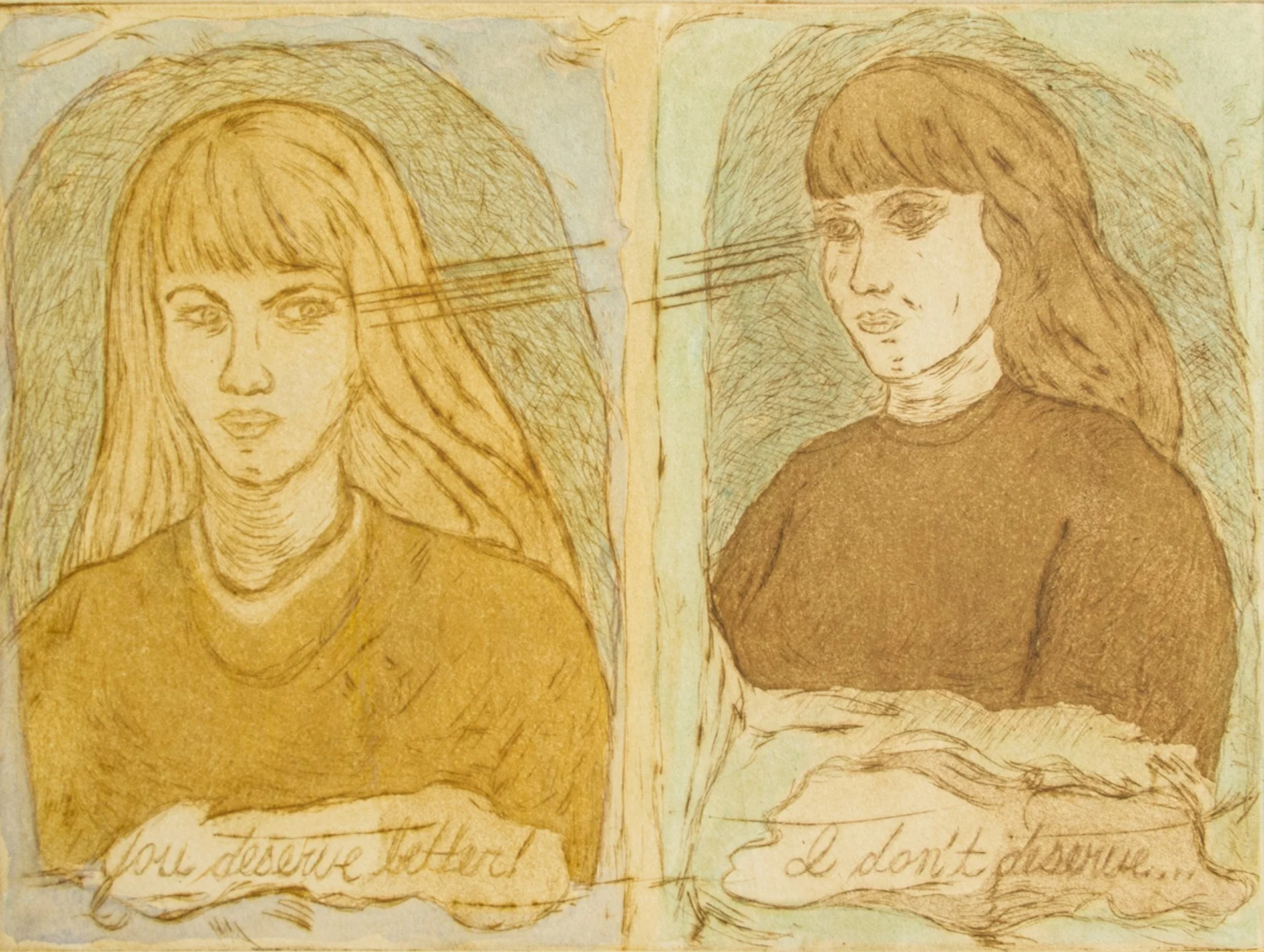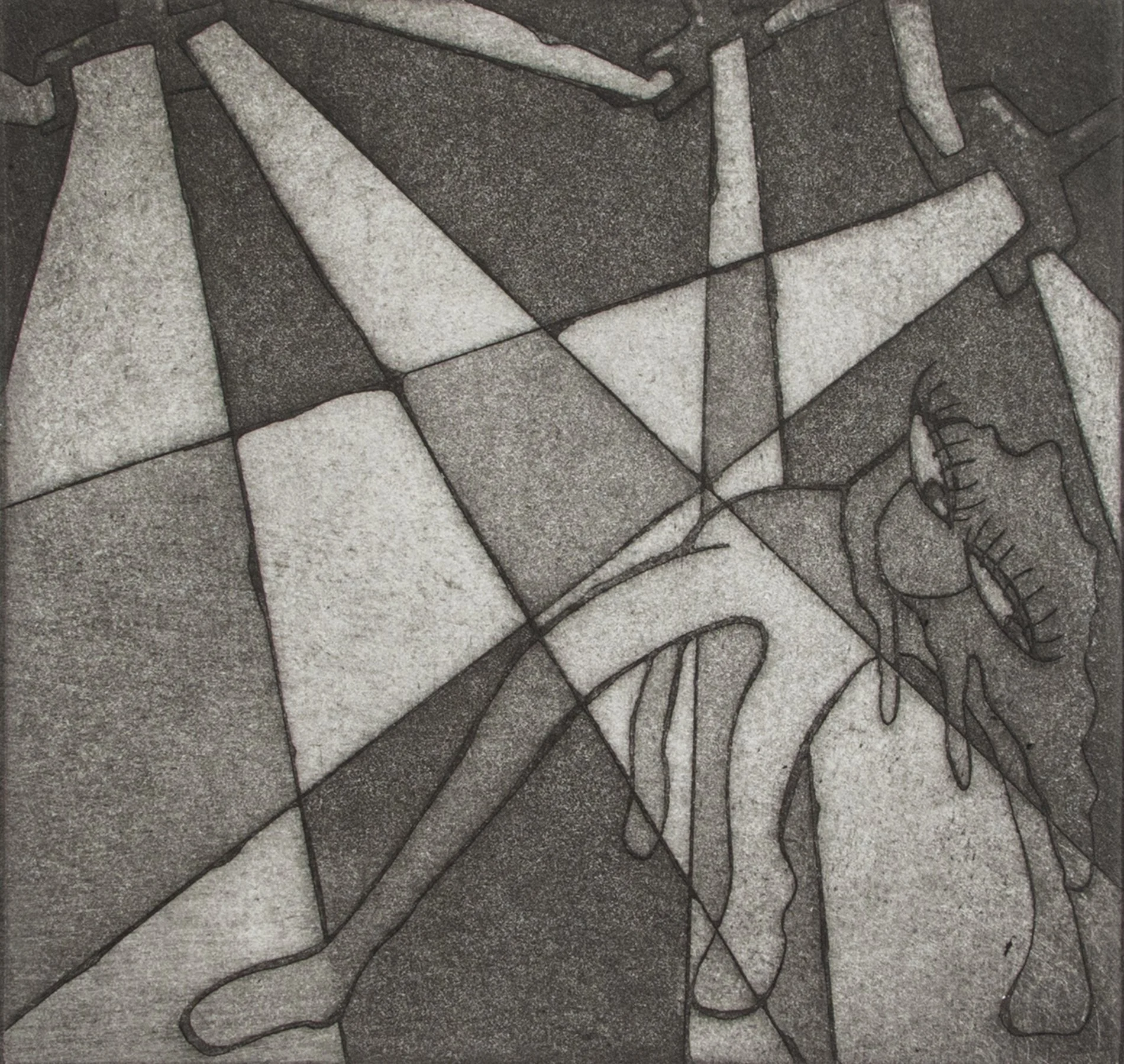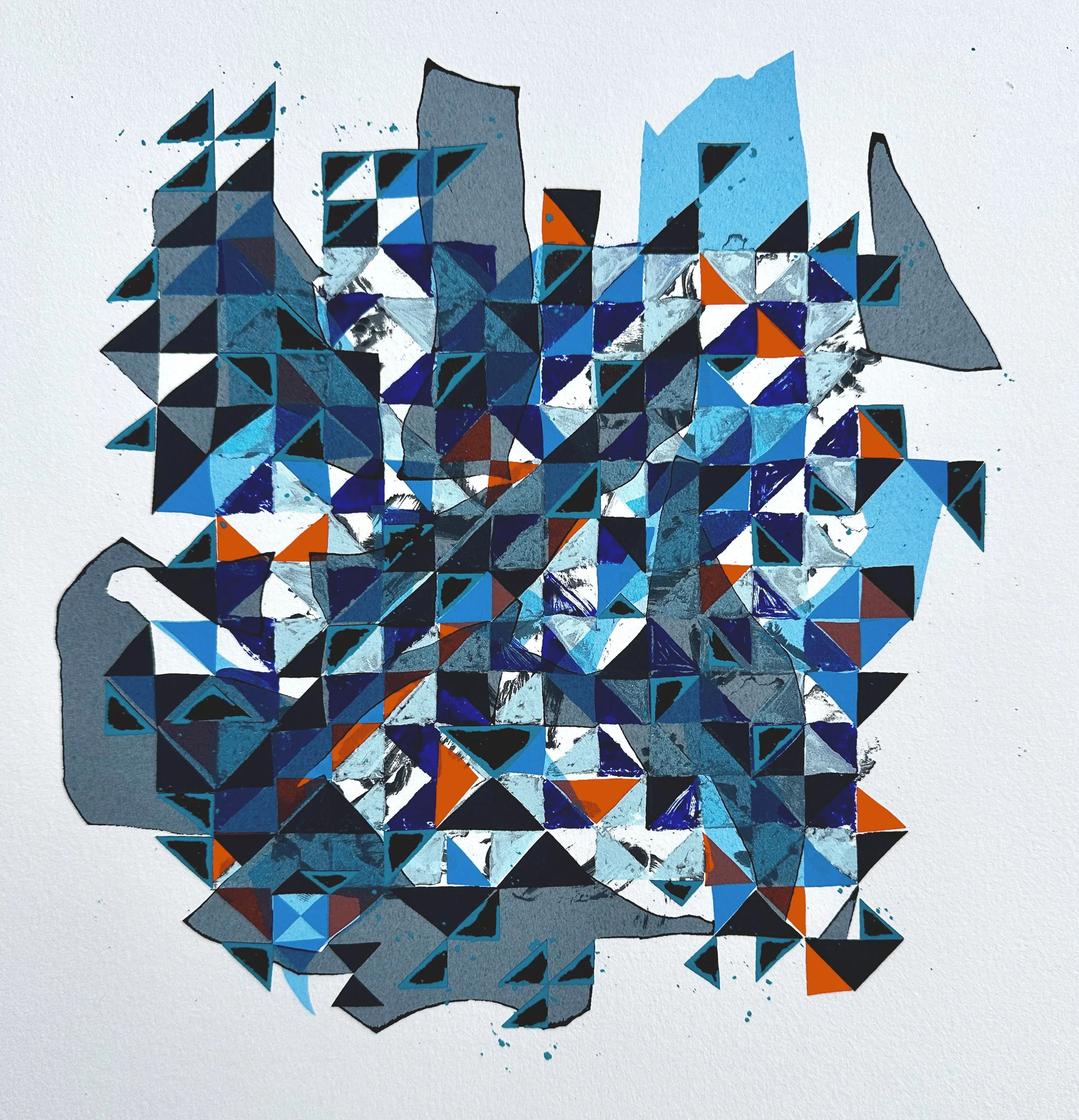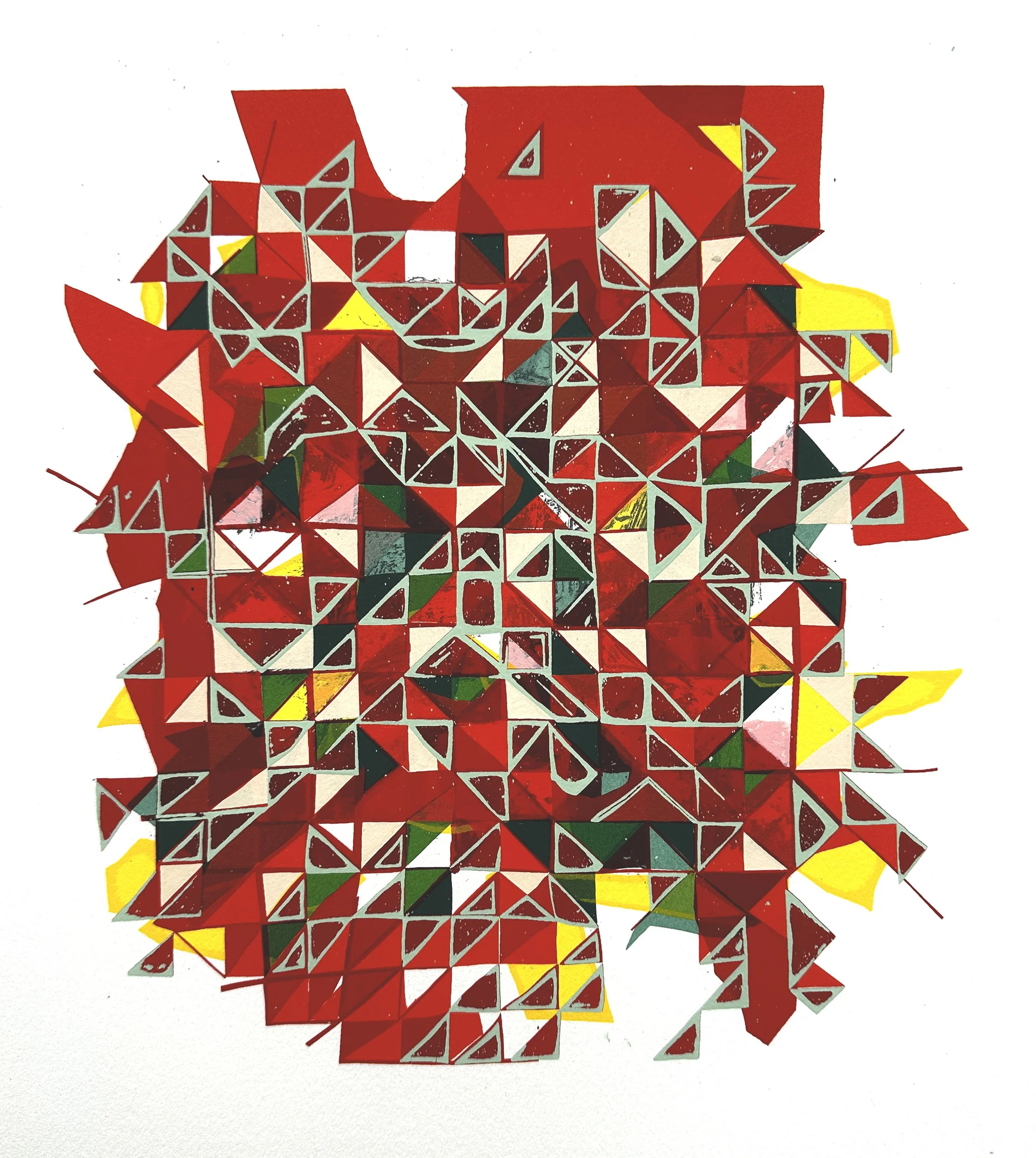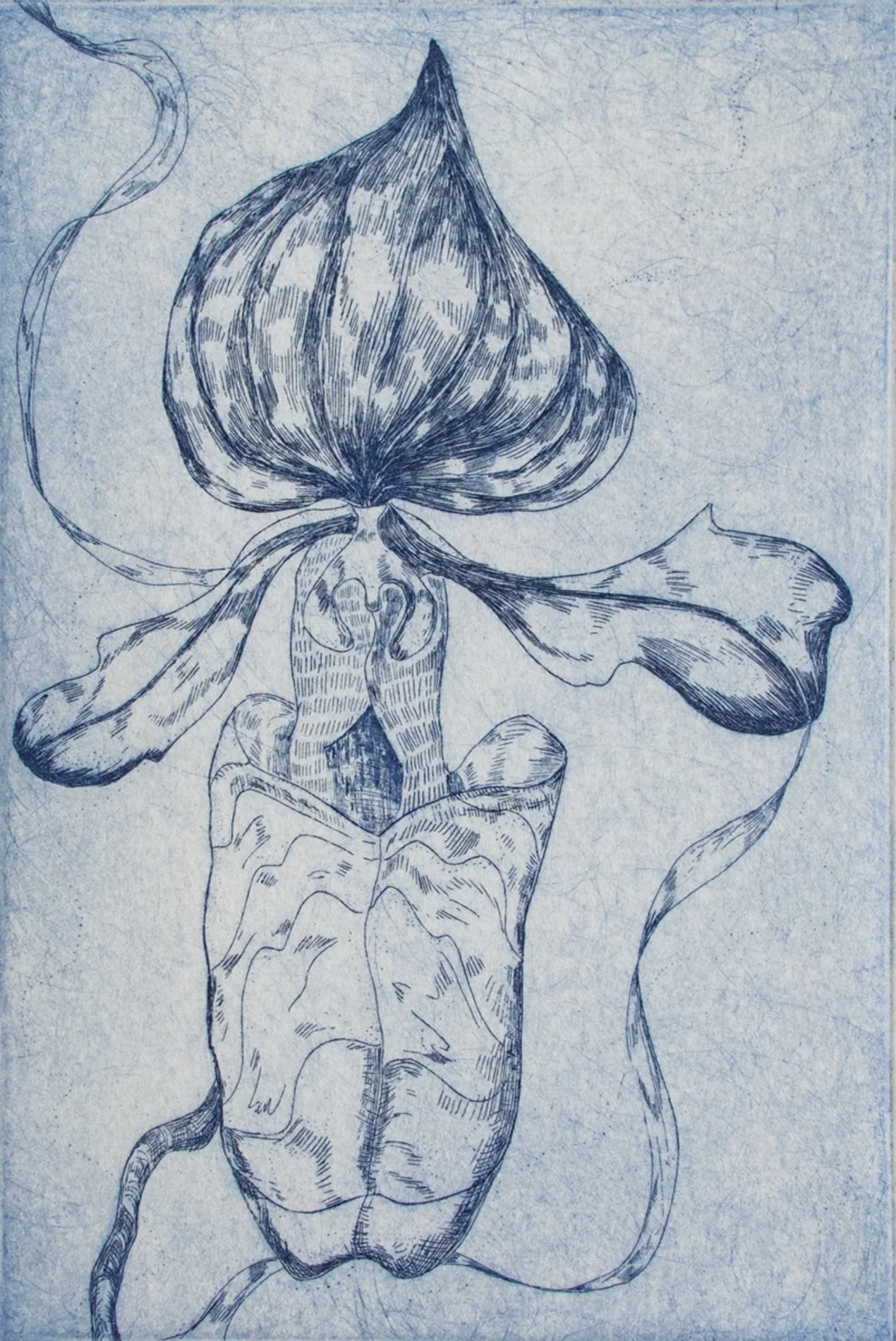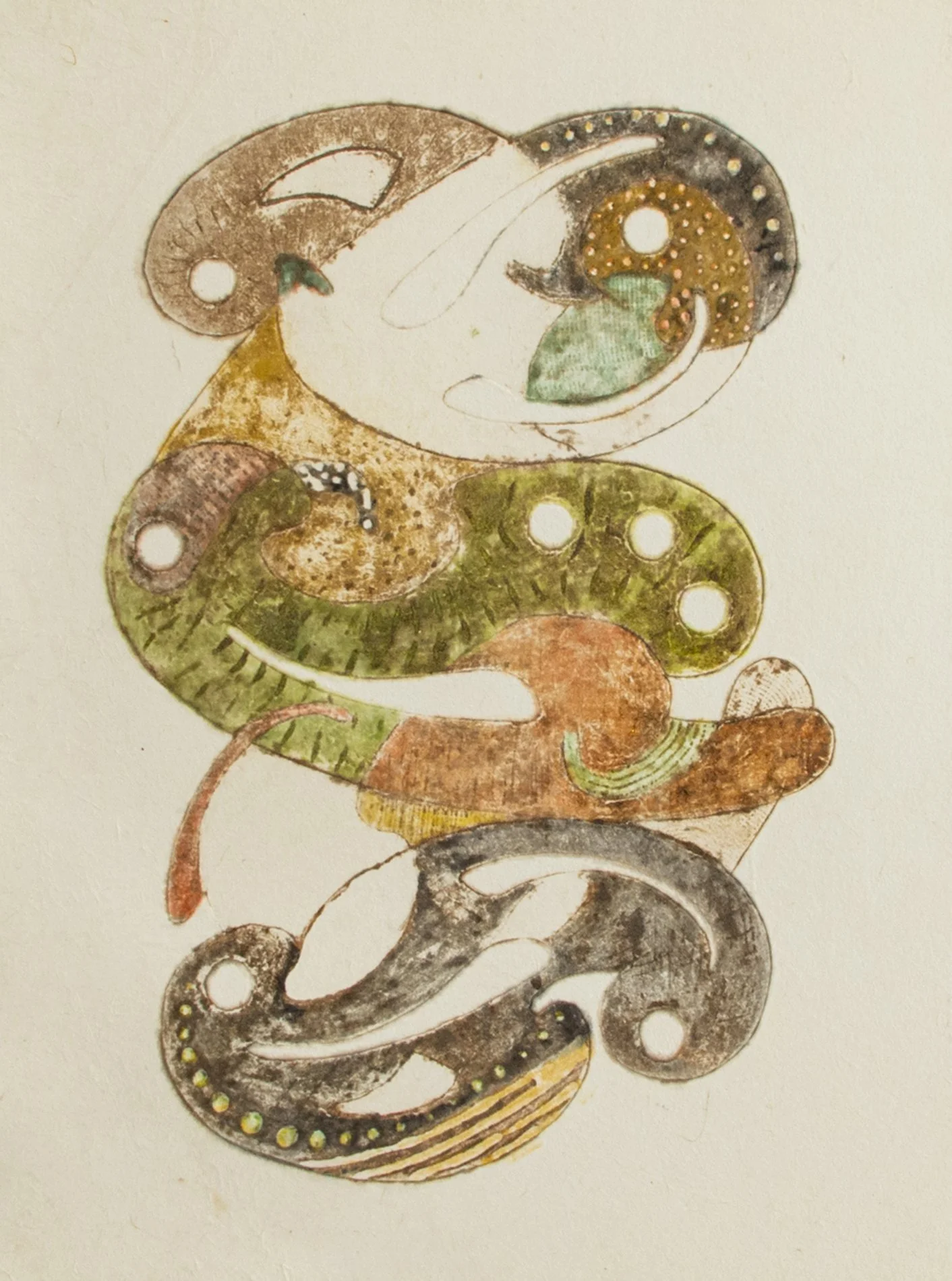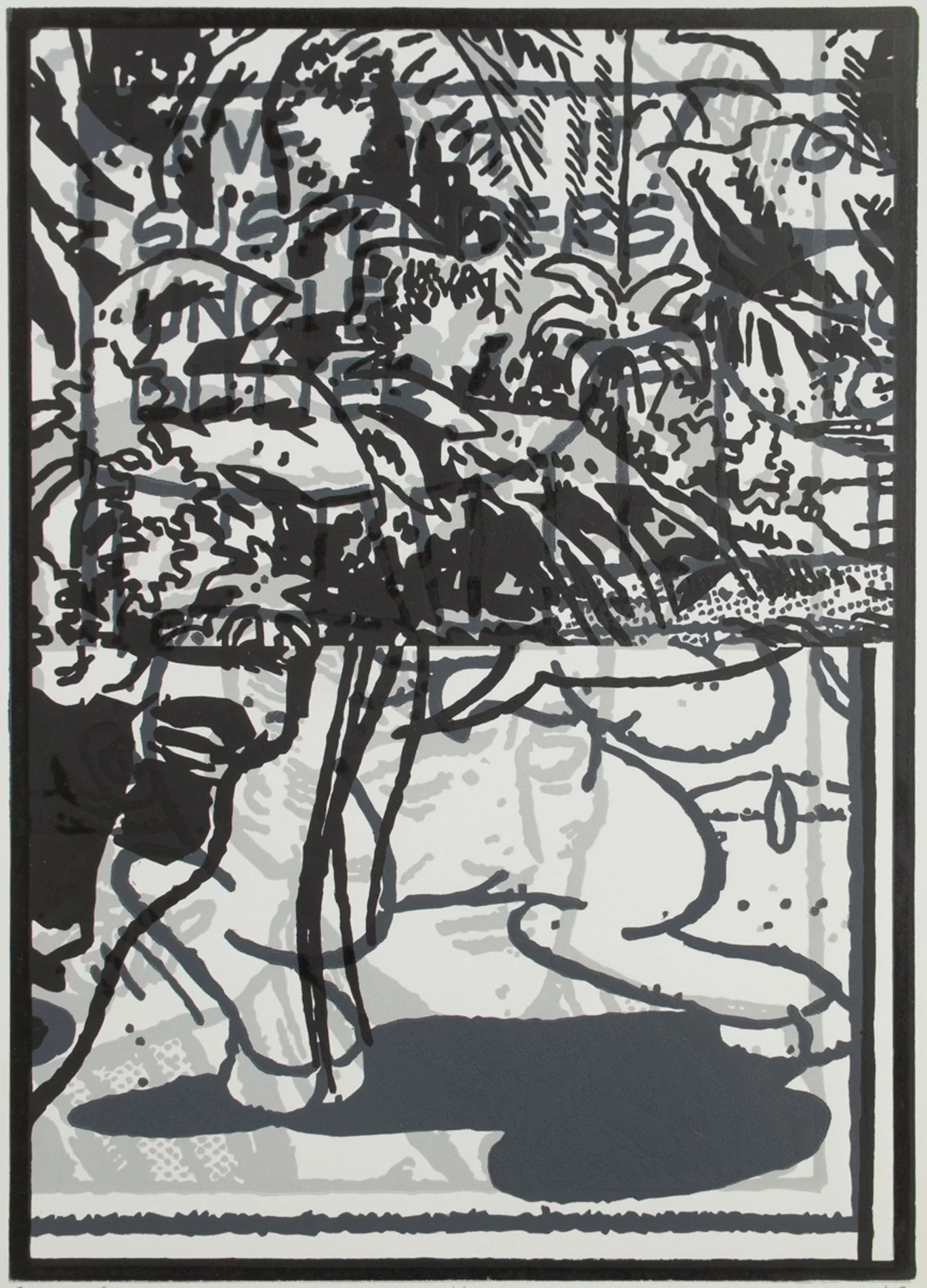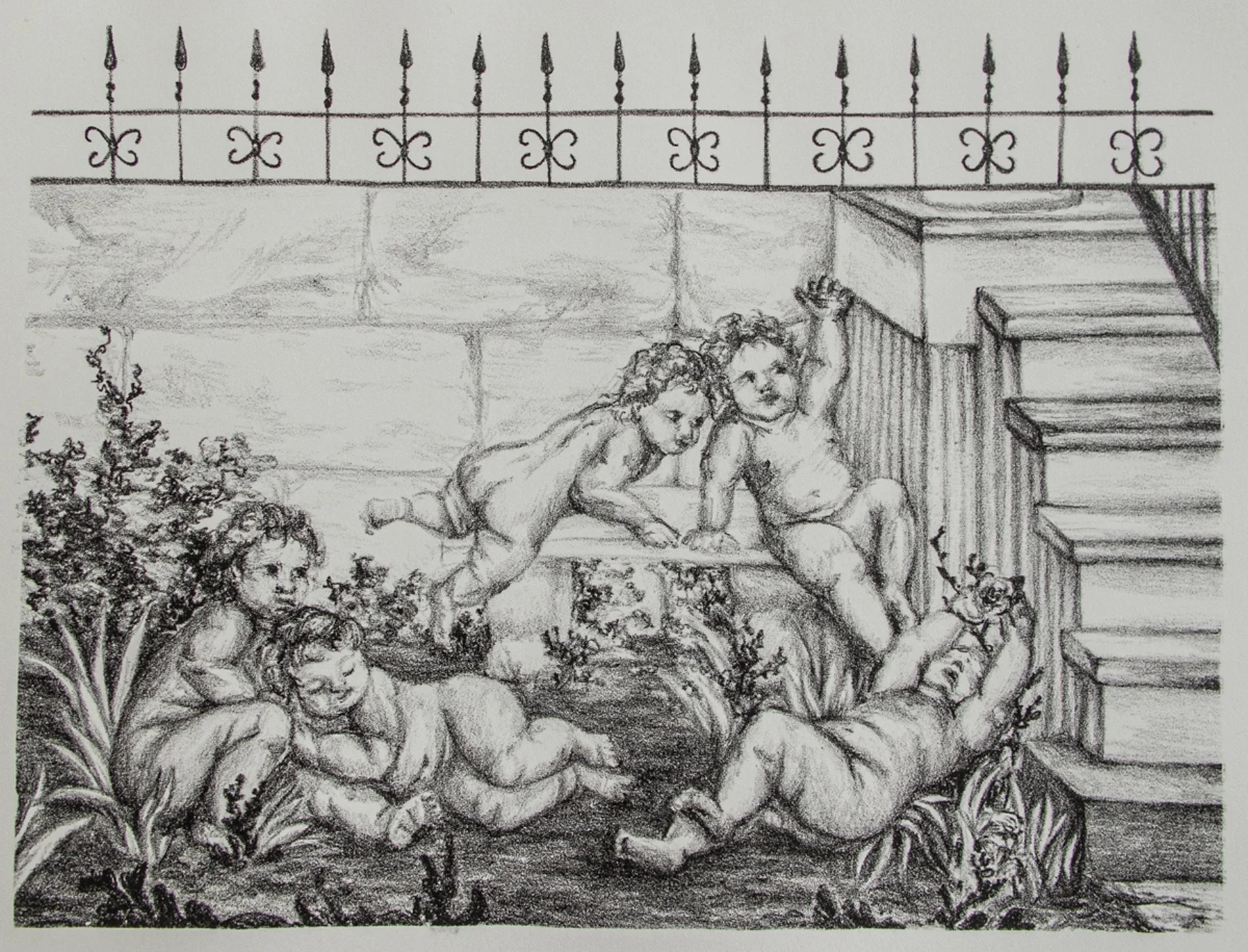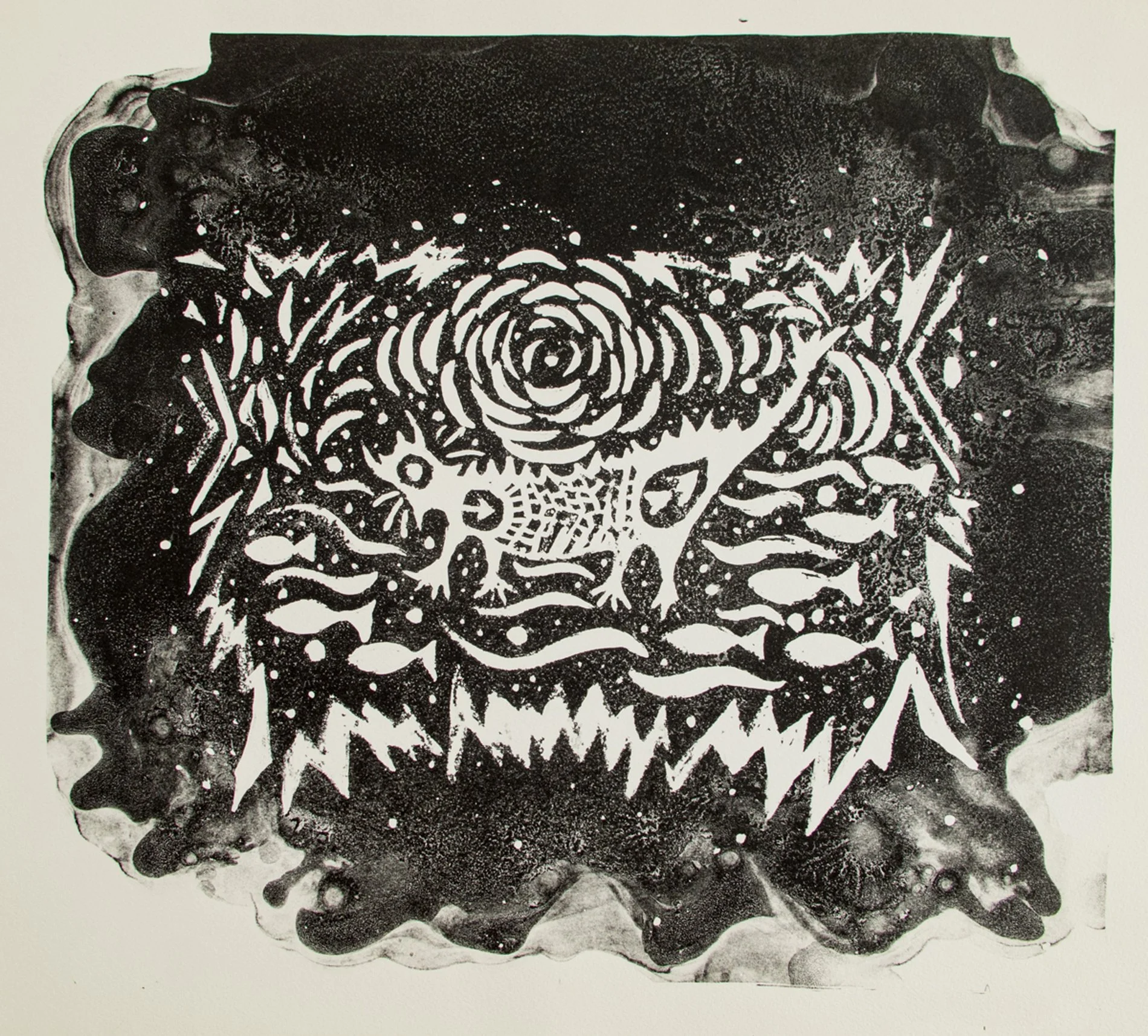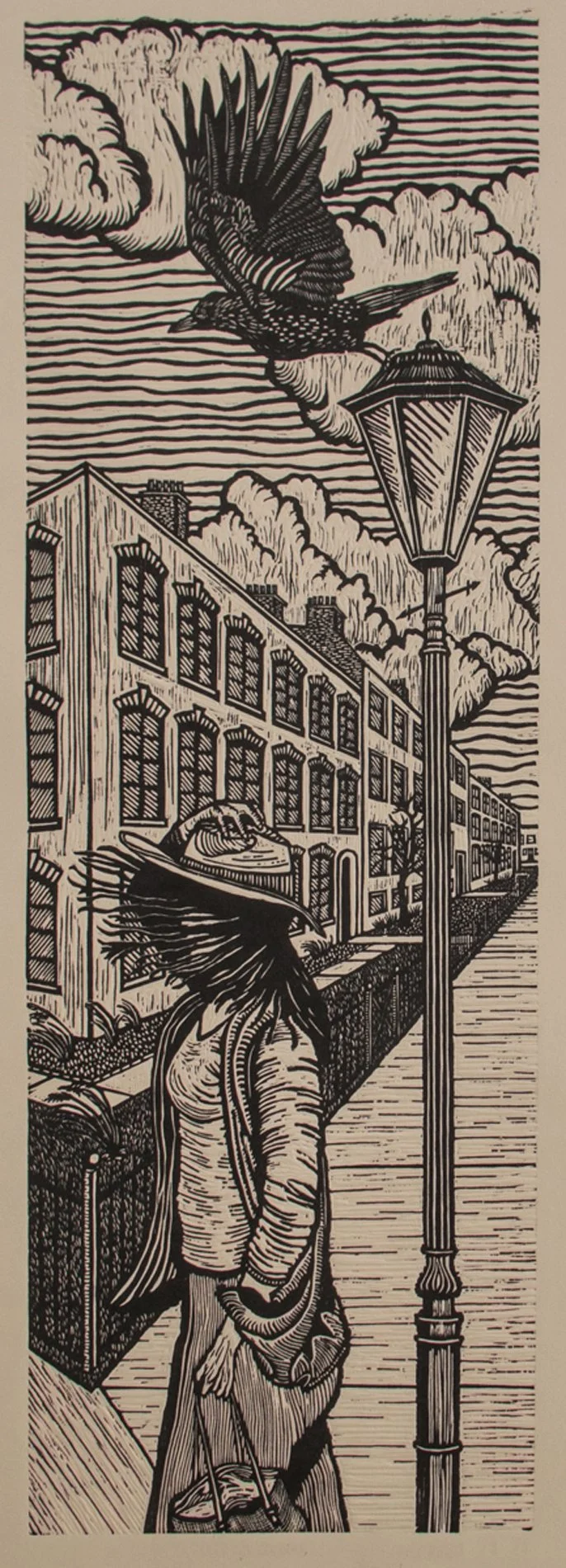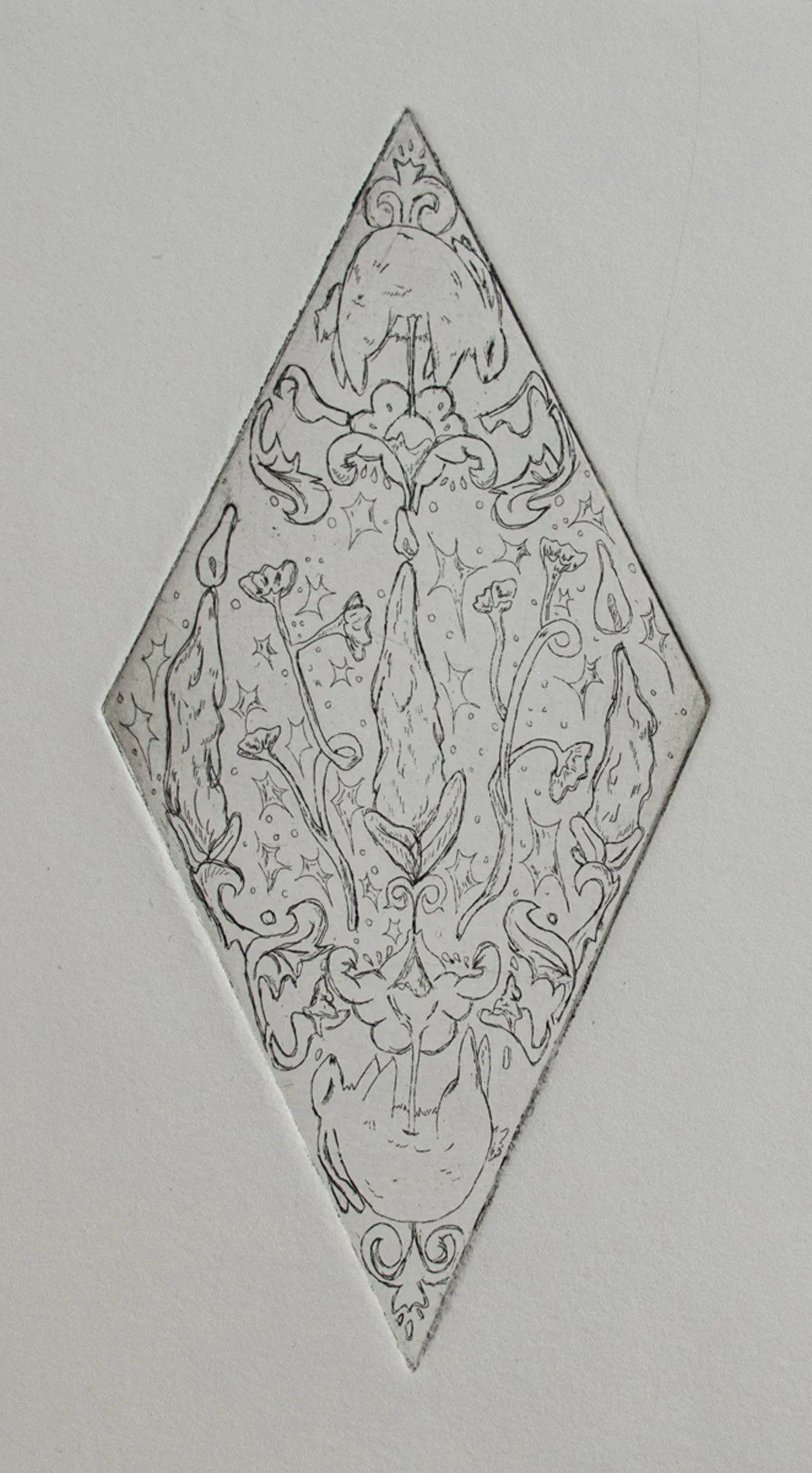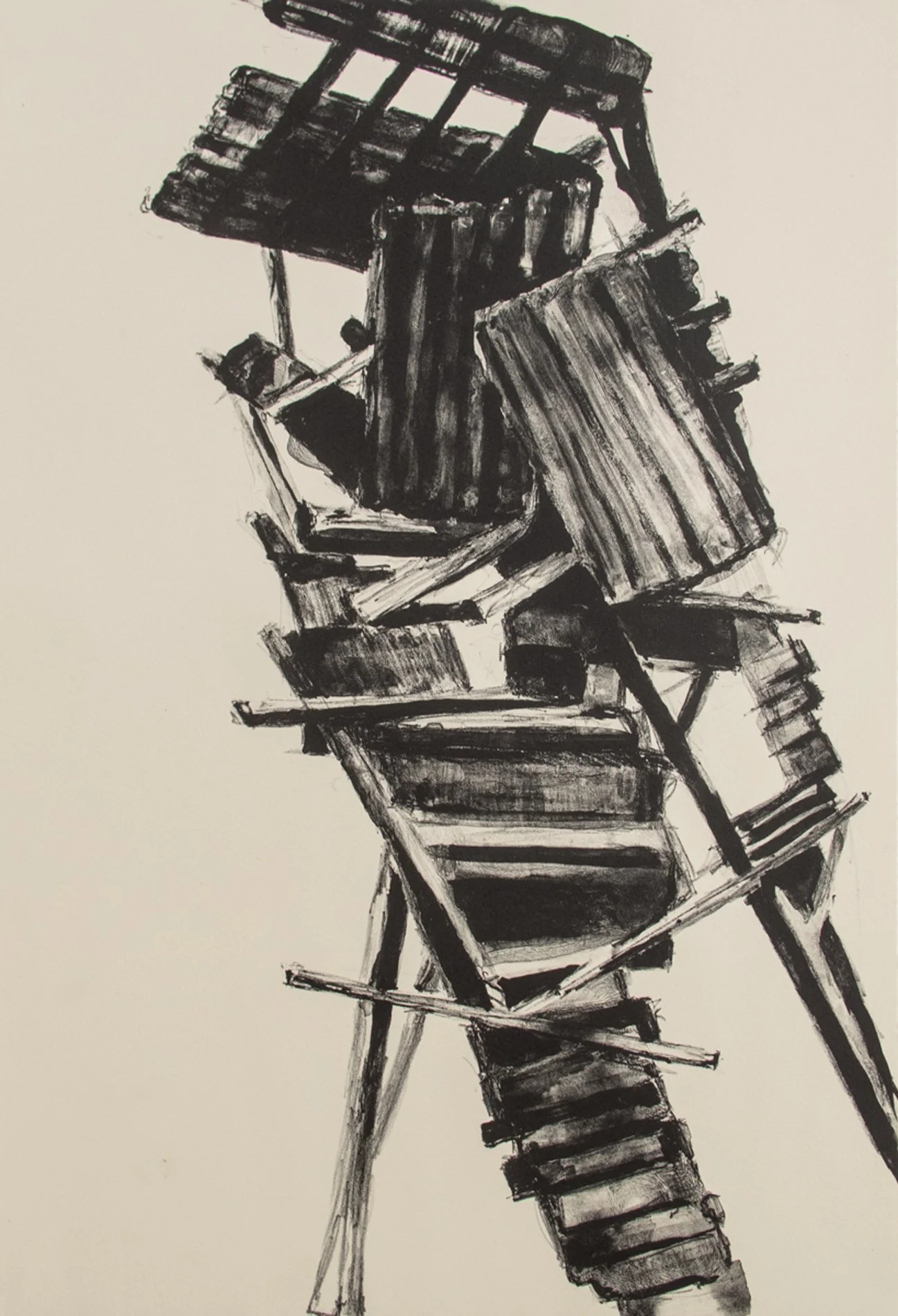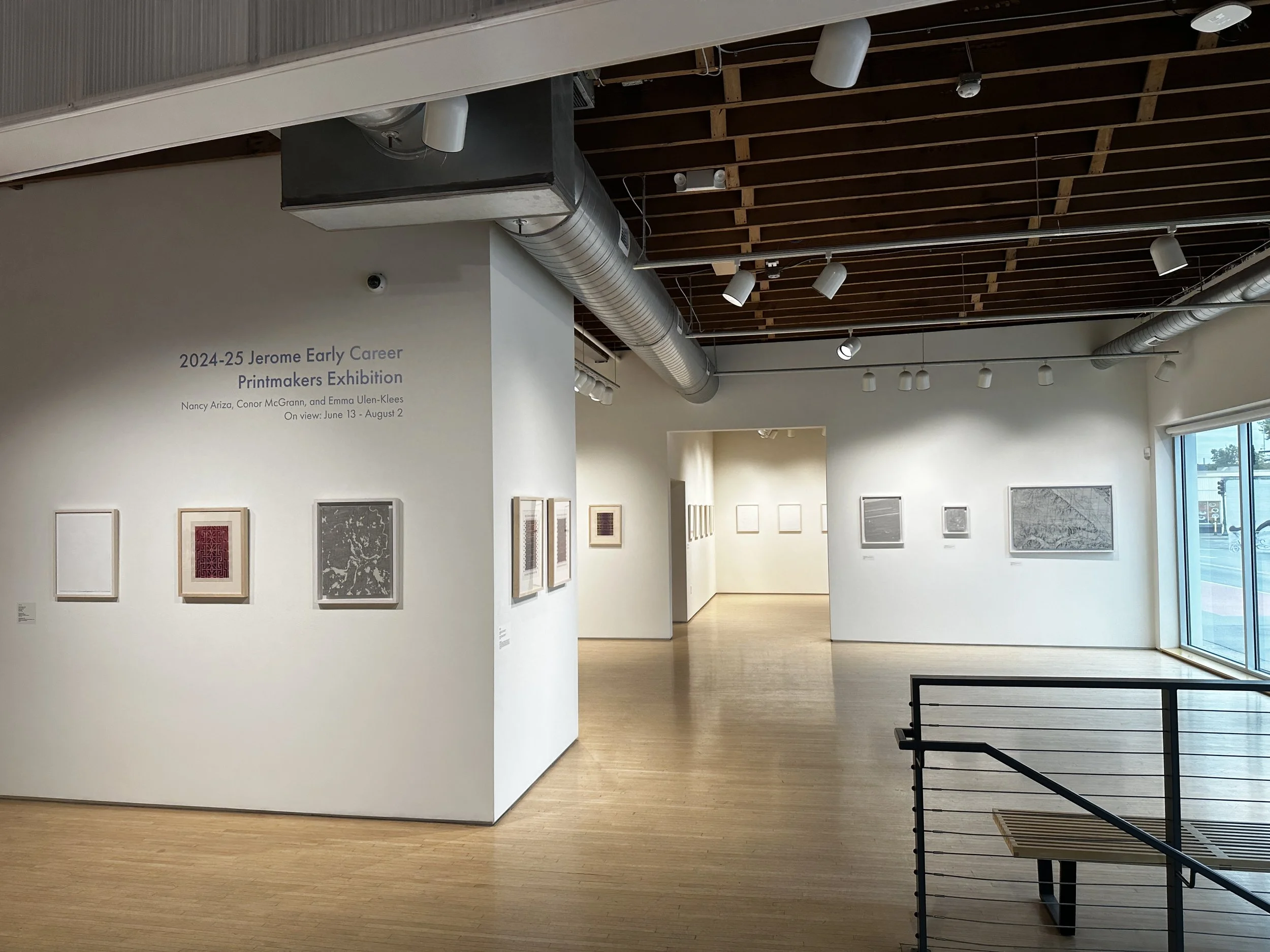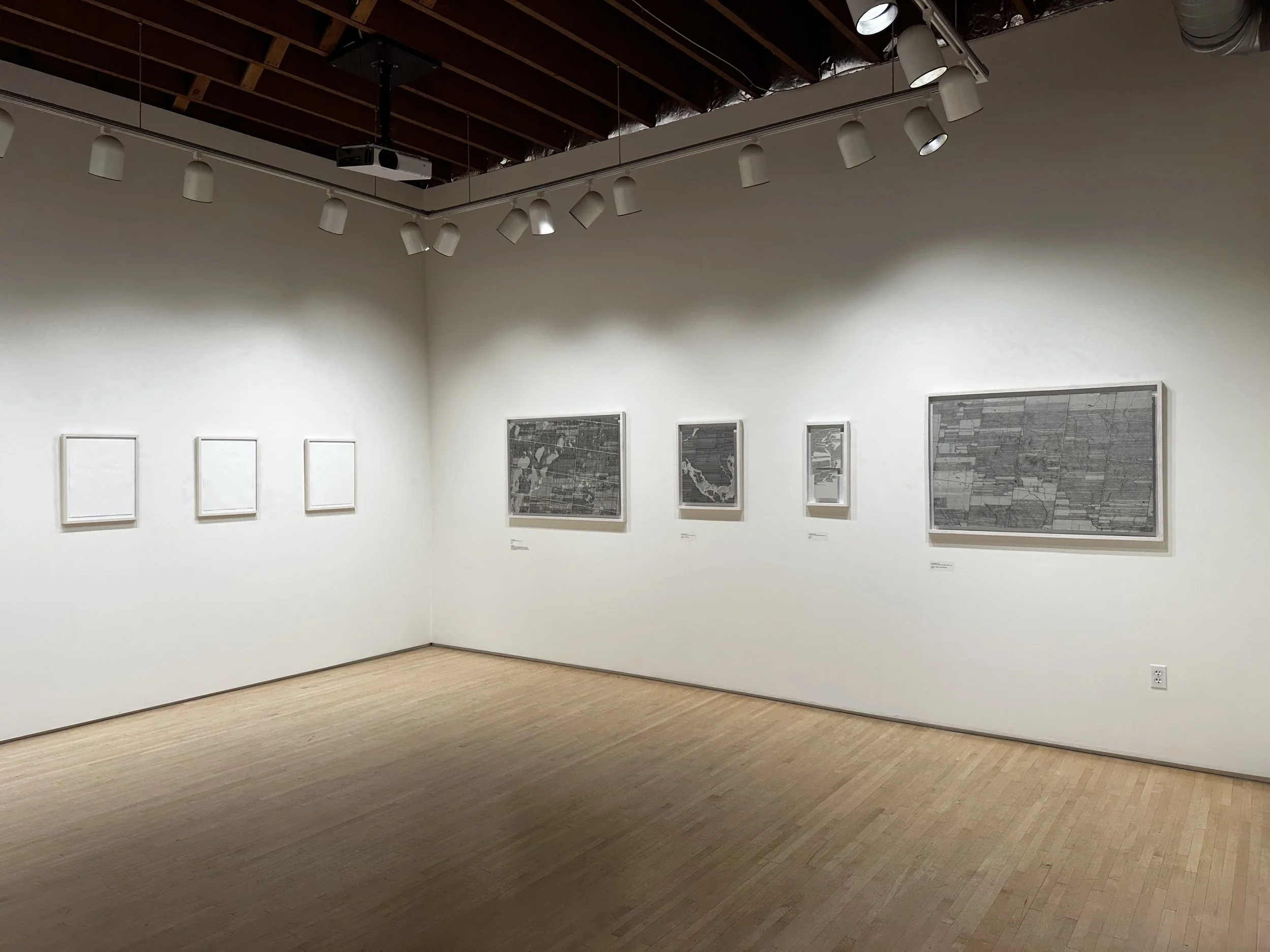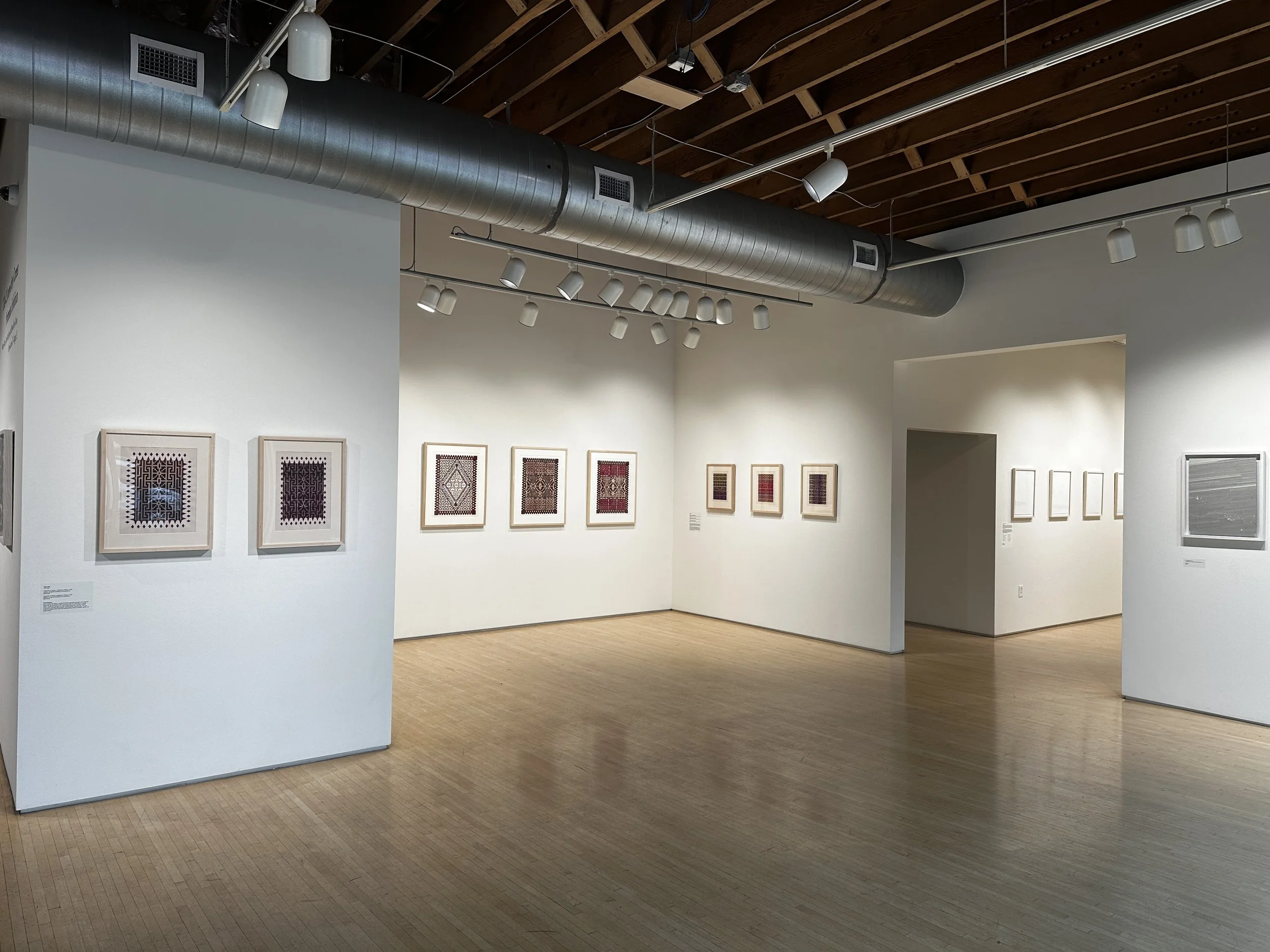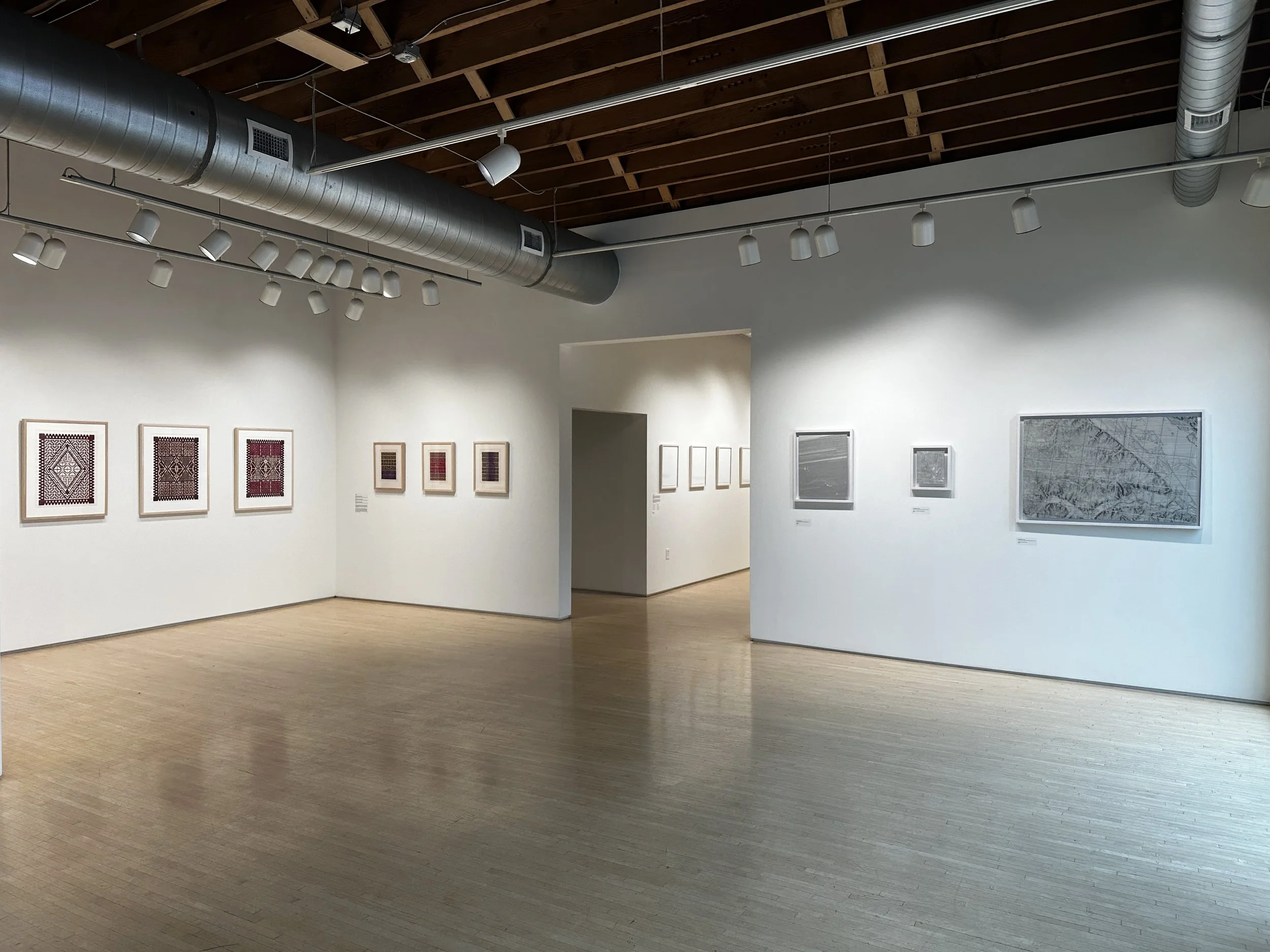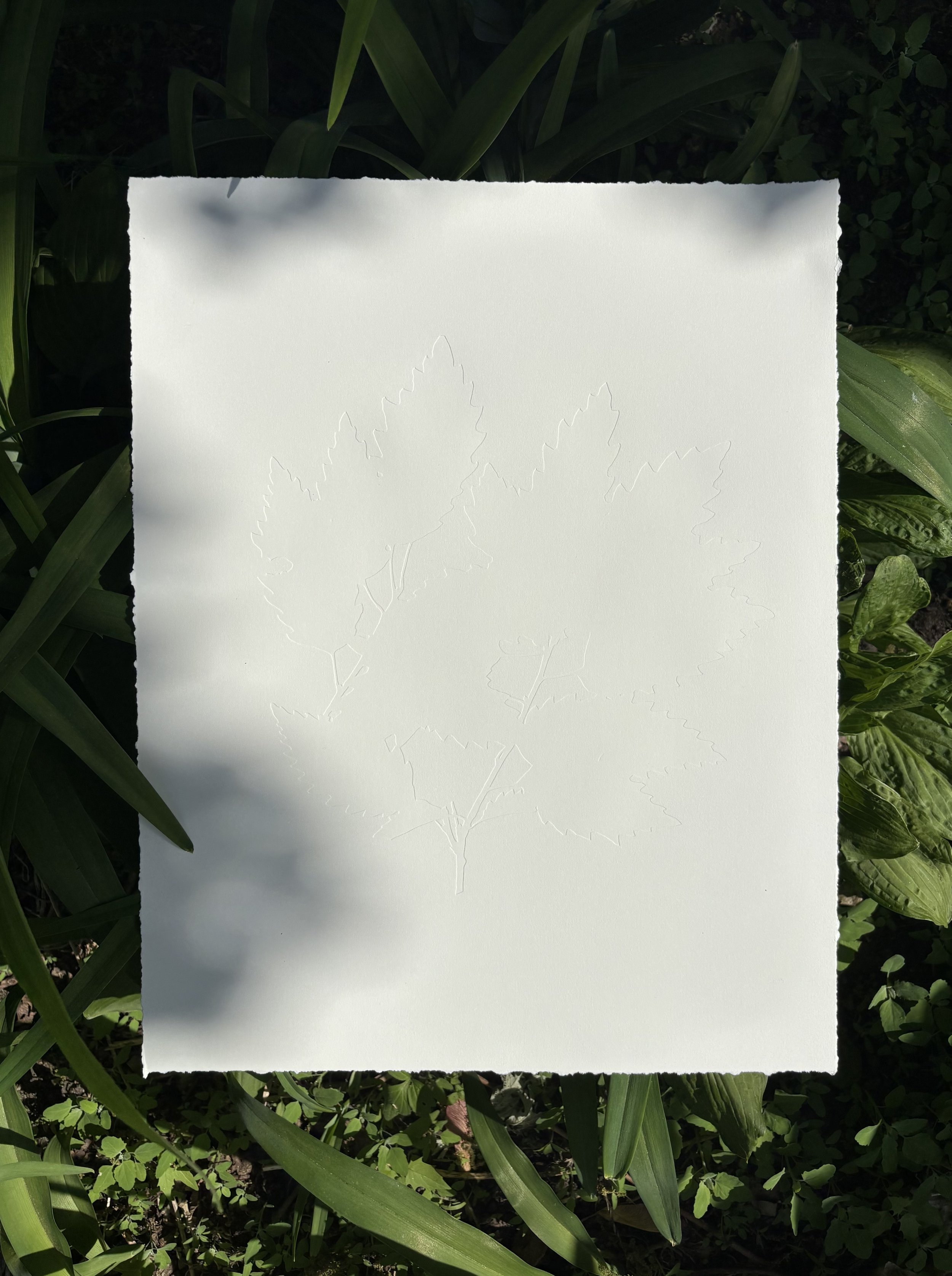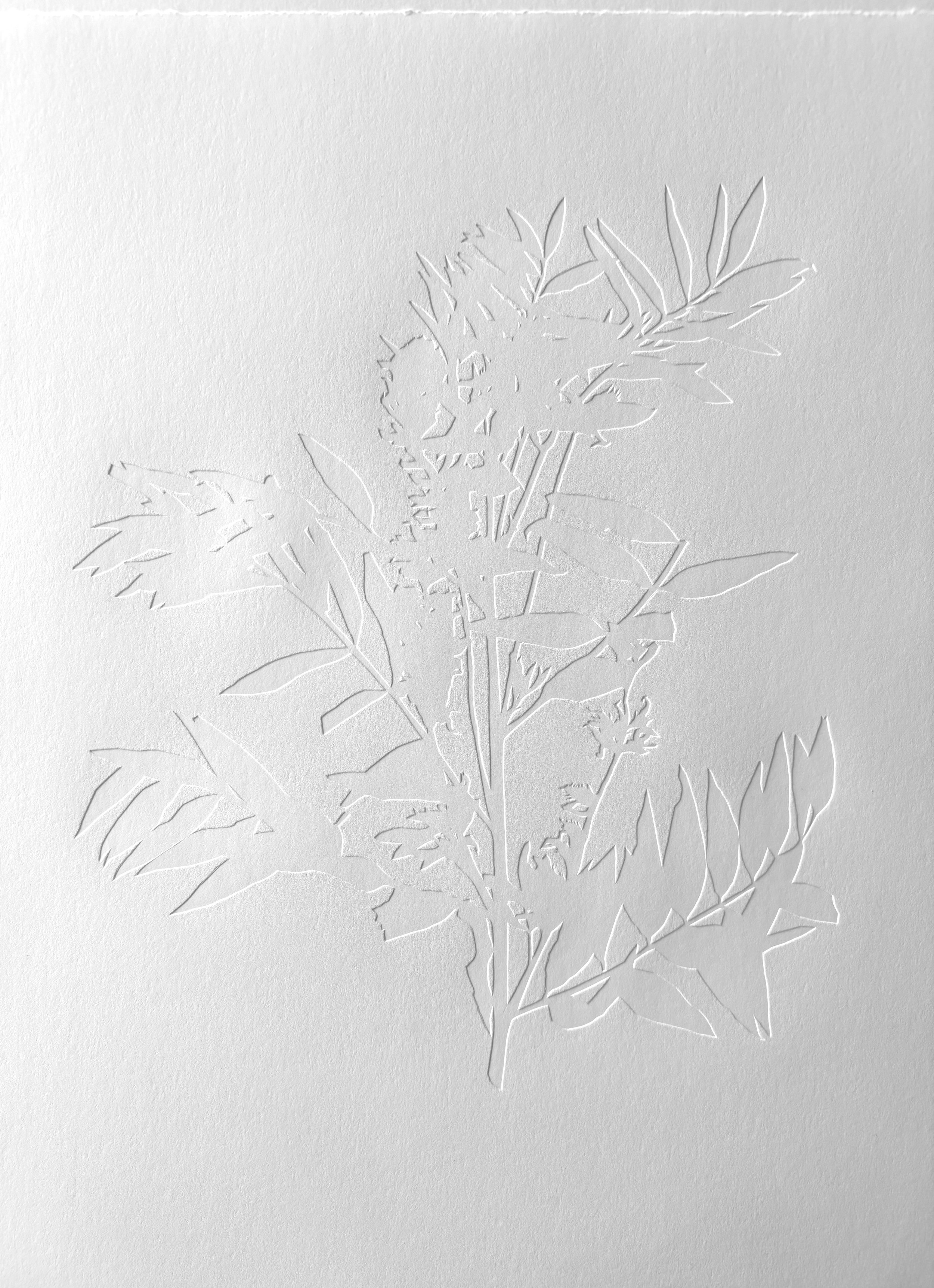It was a very fruitful year for Emma Ulen-Klees, Conor McGrann, and Nancy Ariza. A shared trait of these three artists is the abundance of their practice. Each of them is generative, prolific, and possessed of a work ethic which motivates them toward exhaustive exploration of their ideas and themes. Another shared trait would be their technical prowess, the exhibited work demonstrates remarkable skill
Visually though the similarities are few, it’s unlikely that any gallery visitors mistook the authorship of any of the works. The monochromatic treatment of Emma Ulen-Klees de-bossments showcase the painstaking nature of her craft (stencils cut by hand) while honoring the delicate detail of the subjects she records (aged plant specimens). This series beautifully blends the artists’ hand with majesty of nature.
She says, "These past few months the studio has become crowded with the silhouettes of an incredible array of leaves, stems, tangled roots, and feathery blossoms. Part of my series archiving rare or extinct plants through blind de-bossings, I look forward to giving each of these specimens space to breathe during the upcoming Jerome Exhibition. As shadows of absent species, this work denies easy reproduction, so I am grateful for the opportunity to share it in person with the Highpoint community.”
Conor McGrann is relatively new to the Twin Cities. His change of environment and new role as a father have been informing his work, albeit in a more analytical manner. Conor’s terrestrial studies juxtapose the organic footprint of actual watersheds with the mechanized lines of a plotter machine. The viewer is rewarded when they get in close to the work, what read from a distance as largely natural in design is uniformly rectilinear.
Conor says: “In my time as a Jerome Resident I have been utilizing publicly available geographic datasets of Minnesota wetlands. Through the use of GIS (Geographic Information Systems) software, I have coded, filtered, and manipulated the data, dropping unwanted information and obscuring it from its original didactic intent. I then exported the data as a vector file and once again filtered, manipulated, and cleaned the data so that I could output it through a plotting machine. This took the form of vinyl intaglio grounds to etch plates, direct cutting to create collagraph plates, and building my own custom instrument holder in order to hold pens to make drawings, and using etching needles to plot directly onto intaglio plates. I have researched and implemented all these techniques to make a body of work that speaks towards climate/parental anxiety, distrust in systems and technology, and my distaste with our culture’s comfort with the status quo.”
The geometric patterns that inspired Nancy Ariza’s prints come from piteado, a traditional Mexican embroidery technique used to decorate leather goods. Nancy, a descendant of a piteado artisan, honors and continues her family's cultural legacy through this body of work. Nancy utilized certain traditional pigments (such as cochineal) as colorants along with embroidery, another time-affirmed technique. At the same time Nancy’s work has roots in traditional techniques and materials, her execution of the images was novel and contemporary.
Nancy offered this about her process: “Over the past few months, I have continued exploring the intersection of woodcut, screenprinting, alternative printmaking processes, and natural pigments, primarily cochineal and quebracho. New elements such as embroidery, hole punching, and chine collé have also become part of this series, deepening my personal understanding and connection to material and process. These various processes take life as investigations of geometric patterns rooted in my Mexican heritage, and engage broader themes of migration, language, gender, and craft.
The Jerome Residency has been instrumental in helping me solidify my artistic voice, embrace risk-taking in the studio, and build confidence in my expansive printmaking toolkit. I am deeply grateful for the experience and support.”






































